#while my obsession with ancient history/mythology is always there
Explore tagged Tumblr posts
Note
I see you reblogging hades stuff! Will you eventually go into some in depth analysis like you do with bg3? Hades is becoming the next hyper fixation of mine after Baldurs Gate and I’d like to hear your takes on anything relating to hades if you have any! 🥰
thank you for your kind message! i really appreciate it!
i'm a bit on the fence whether or not to. i'm hesitant to get invested, mostly bc of how they appear to be handling odysseus, penelope, telemachus and circe so far.
i'm trying to keep an open mind tho bc it's early access and we don't have the entire game yet or all information.
although who knows, maybe it'll motivate me to do so either way.
having said that, i have my (re-)reading material close by (((': :
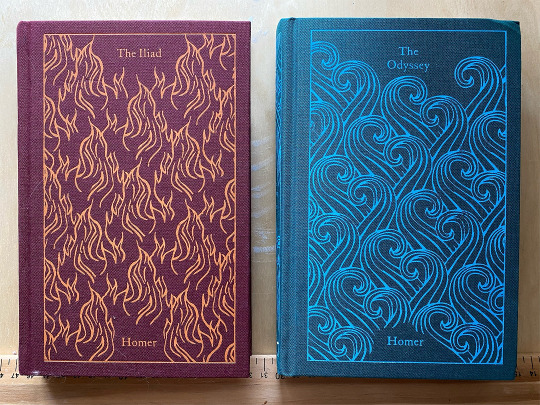
🖤
#while my obsession with ancient history/mythology is always there#the gale brainrot is still Too Strong (((':#vg: hades 2#series: hades#text: asks#text: personal
20 notes
·
View notes
Text
intro
my name is zeno I'm a trans dude from italy,a minor and a LOSER!!! my pronouns are he/they (it/its too if you fell silly enough)
twt: nomoreblowjobs I'm more annoying there
feel free to dm me if you want to be friends!! I'm introverted af but open to new friendships 😼😼
main interests
my main interest is riordanverse, especially pjo and ESPECIALLY Percy Jackson,he is my comfort character and i love him with all my heart!!! I'm so interested about what happened to him after tartarus, about his newfound power and about how godlike he is power wise, as well as his reaction to this discovery!! that's why i read fanfictions every day.
my fav ship are jercy & pipabeth <3
(note: i absolutely fucking hate rick riordan cause he is a zionist. FREE PALESTINE!
i haven't read any of the new books after tsats and i don't consider them canon in my head,they are definitely a cash grab and, judging by the parts i have read, don't make sense cause he doesn't reread his own books
+ i don't really ship percabeth BUT I DON'T HATE ANNABETH BECAUSE WHY WOULD I )
i also love the marauders!! while in pjo I'm more interested in reading and obsessing over trauma, tragedy, death, suffering and power, in the marauders i always look for no magic AU, especially band AUs!!! while I'm sooo interested in the tragedies of canon (aka atyd) i just LOVE a story with LESS major characters deaths!! lmfao i love remus and marlene SO MUCHH!! they are my babies
my fav ships are wolfstar, pandalily and dorlene!!! i also fw moonwater ngl
shameless is my favourite TV SHOW I've rewatched it SOOO many times (pretty much every summer, im rewatching s5 rn) and it keeps getting better!!! ian my baby they could never make me hate you. gallavich😭😭😭😭 I LOVE THEM THEY ARE SOOOOO SREIEJHRKRHRJODHDODIFOFU i don't have to say anything else
also greek mythology but this is long enough as it is you can already see that I'm a freak i shouldn't have to add that I'm a nerd (i also study ancient greek and latin at school 😸😸 it sounds cooler than it actually is but whatever)
fav anime
bsd(<333), soul eater, attack on titan, spy x family, saiki
fav books
crime and punishment, notes from underground, the secret history, ultime lettere di jacopo ortis(ita)
(dostoyevsky is my fav author!!!)
fav shows + movies
shameless, heaters, hannibal, the end of the fucking world, ride the cyclone, how to get away with murder, girl interrupted, dead poets society, the goldfinch
fav bands/musicians!!!
mcr (my fav band i love them so much)
fob
ptv
conan gray (mostly his early stuff)
olivia rodrigo
soad
korn
deftones
modern baseball
frank iero
the cure
the smiths (...i know)
mitski
nirvana
she wants revenge
linkin park
slipknot
noah finnce
millionaires
violent vira
kittie
probably more that i forgot but yeah
(I LOVE CUTE WITHOUT THE E PEAK SONG)
#percy jackson#pjo#percy jackon and the olympians#hoo#jercy#toa#heroes of olympus#mcr#queer#mlm#mlm yearning#bcs thats just me#trans and gay#nu metal#korn#soad#frank iero#shameless#musicals#heathers#hamilton#i am a nerd#greek mythology#please don't hate me#i'm cool i swear#fob#ptv#bungo stray dogs#bsd#soul eater
5 notes
·
View notes
Note
Hello! Firstly, I wanted to thank you for the work you do on this blog. My mother's side is Greek and came to the US around WW2, and as I've gotten older and tried to learn about Greek culture, I've found that it's hard to find sources that aren't inundated with American pop-history. It's been really lovely being able to learn more from your blog for the past couple weeks.
Second is my question -- re: the pop history issue, I've noticed that people in the American queer community have a knack for "reclaiming" figures in history and mythology without always having an abundance of evidence for their claims. And like, I'm trans. Obviously the idea of some of things being true is cool, but it also feels disingenuous sometimes. Do you know of any good resources or books written by actual queer Greeks about either their contemporary experiences, or the history of queer people in Greece that isn't just conjecture?
Thank you again! Have a great day :)
Hello! It makes me so happy that you found my blog suitable to inform yourself on this part of your ethnic / cultural background. I hope the blog will keep being a useful source of information.
Because I am not going to lie, the way Greek history and culture, more like a snippet of it, has been almost forced into American pop culture is indeed through a disingenuous conjecture. Honestly, it's not so much a matter of accuracy per se. It's more that a niche piece of the culture has been taken and presented as almost the entirety of this culture, which eventually leads to tremendously false impressions, no matter how earnestly this niche part is explored. There is also the tendency to shape ambiguous evidence into unquestionable conviction.
I will attempt to explain why this can be a problem. Let's take the axiom - because it has reached the lengths of being treated as an axiom - "Ancient Greece was gay or Greece is gay or Greek culture was gay culture or Greece is / was a gay haven". If we really study Greek history and culture in its entirety, in a span of 3,500 years or more if we also take into acount the pre-Greek civilizations which eventually helped produce the Greek, while the existence of gay people (i.e Sappho), non-straight sexual practices (i.e erotic amphoras), ambiguous literary relationships (i.e Achilles & Patroclus?) and varied expressions of sexual desire observed especially in male deities are 100% well attested and recorded, they still comprise overall a very tiny part of the Greek civilization. Whereas it is often portrayed in western pop culture as the very essence of Greek civilization, exploration and studies of sexuality and gender identity throughout its history could amount to maybe a 1-5% of all documented knowledge associated to the Greek ethnos, its history and its legacy. Think of it this way; Greece happened to be in the epicenter of many formative achievements of humanity; spreading, contributing or improving on science, arts, extant religions and linguistics. It has been an area extremely ravaged by war because it has a very strategic position on the map. It has been in the core of three of the world's largest empires and it has been positively or negatively influential to all three (and the generator of one of them). There are so many things, struggles and achievements, to study and explore and draw from as part of your identity, that a constant foreign obsession and trivilization and sensualization of the sexual practices of people long gone eventually will start sounding disingenuous or lacking or even demeaning. Just like every individual aspires to be acknowledged and respected for more than just their sexual or gender identity (i.e skills, feelings, talents, achievements, personality), it is the exact same with culture and heritage. People want their culture to be appreciated in its entirety and not for a super niche area that is also exaggerated, if not exploited to serve foreign agendas, trends and marketing (because let's be real, not all have noble representation motives).
Okay, now I have to ask: do you know Greek? Because I can recommend you some sources, however Americans do not translate Greek works unless they are from 750 BC :)
Here's a quick heads-up:
The Greek society is a pseudopuritan society - one where people act like puritans when it comes to judging others but not at all when it comes to themselves. The gay male community has by far the biggest visibility nowadays. Lesbians come second. Other sexual orientations follow i.e bi, poly, pan. Gender (trans, non-binary, fluid etc) identities have less visibility. Asexuals also have near non-existent visibility. Most non-het non-cis people face problems in their families rather than in their studies or in urban environments. Non-cis people, especially AMAB people, might also face hardship in the workplace (like not getting easily hired).
Because the society is pseudopuritan, it tolerated and embraced and worshipped several LGBT people, except if they attempted to communicate their experience. Great composers and authors were openly gay and Greeks knew it and loved them, because they didn't explicitly involve their sexual identity in their work or because they didn't expose the pathogenies of the Greek society. If they had done that, the reception could have been different. Because of all these reasons, most of my sources will be from the perspective of gay cis men (the most visible LGBT+ community) and it will be mostly the great work and legacy they left behind, rather than their explicit documentation of the experience of living as LGBT+ in Greece.
LGBT poets and authors:
Constantine Cavafy (1863 - 1933), one of our best poets. This can be useful to you because his works are actually translated in English.
Napoleon Lapathiotis (1888 - 1944), openly gay in such times, he wrote a lot of erotic poetry.
Augoustos Korto (1979 - ), a married gay man, successful writer and activist, he has written extensively on the topics of death, depression, motherhood and love, often drawing from personal experience.
Kostas Tachtsis (1927 - 1988), poet, distinguished author and activist for gay rights during the Colonel dictatorship in the '70s. He suffered in his life and in his death as well. His murder has not been solved yet. He has written an autobiography and numerous novels with autobiographical elements. He was gay, either cross-dressing cis or maybe trans or non-cis (we don't know that back in time how exactly he identified) and had also been a sex worker for some time.
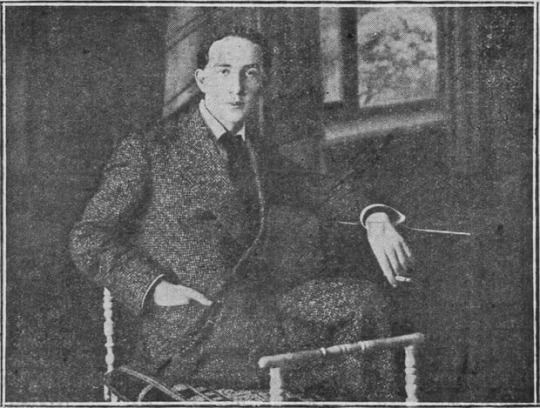
Napoleon Lapathiotis
Music:
Music won't give you direct information however it could be a way to bond with people you could connect with over similar experience.
Manos Hadjidakis (1925 - 1994), one of our two greatest composers and a rare genius, was openly yet "discreetly" gay, not out of shame but because privacy on all aspects of the human experience was absolutely essential and sacred to him. He was also an Oscar winner, although he would hate me for saying this (he threw his Oscar in the trashcan). Besides listening to his music, I would recommend watching interviews or listening to excerpts from his radio shows, because of the ease with which he could challenge anyone's intellectual capacity.
Sotiria Bellou (1921 - 1997), a lesbian or perhaps bisexual woman, she is worshipped for her unique voice, which became the ultimate symbol of the heavy-duty (underground at the time + now part of UNESCO's cultural heritage) rembetiko music genre.
TV Shows with representation:
Maestro in Blue on Netflix, a big part of the story is the romance of a gay couple suffering in oppressive families in the province
Milky Way, one of the main characters is pansexual and non-binary, and the actor is gay IRL. There is also a brief lesbian romance or a side narrative of supressed female homo- or bi- sexuality. This show will soon get in some international platform but I don't remember which one (not netflix), so keep it in mind.

Milky Way
YouTube:
There are a lot of LGBT+ people in Greek YouTube but my faves are:
ΚΡΙΜΑ by ZoePreTV: Zoe is a lesbian or bi herself (not sure but I know she's openly in a relationship with a woman) and she makes lengthy very informative quality podcasts with celebrities or everyday people, often belonging to marginalized groups, and they talk about their experiences. If you can understand Greek, this might be the best source for what you ask. I watched a fantastic episode with a trans woman and sex worker talking about her life. It is one of the greatest podcast episodes I have ever watched, hands down.
Eponimos. Zoe's best friend, who is an openly gay man, although he approaches matters of sexuality very delicately as he values his privacy a lot. He doesn't talk often about such matters (recently he did) but his channel is awesome for his lighthearted humour and the maturity of his positions. I love watching his content.
youtube
The podcast I mentioned.
LGBT+ Magazine: ANTIVIRUS. ANTIVIRUS also has this list with recent queer literature, featuring both Greek and foreign writers. Here is the link. It's in Greek though, like everything above...
Art: Yannis Tsarouhis (1910 - 1989), one of the most influential and successful Greek artists. He painted a variety of themes, he was inspired and developed Greek folk and Byzantine art, however he was also particularly notable for his love for the masculine physique and he established the classic image of the "Greek sailor" in art, theater and cinema internationally.
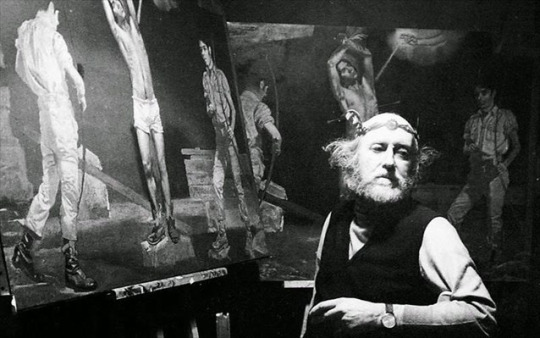
A great photo of Tsarouhis in his atelier.
I wouldn't consider myself well-versed in the topic, so I invite anyone who knows sources that could also ideally be easily accessible to the Anon, to give some recs in the comments. From my side, Anon, hopefully I was of any help.
#greece#europe#lgbt#lgbtq community#lgbtqia#queer community#representation#greek culture#discussion#anon#ask
54 notes
·
View notes
Text
This Woven Kingdom | Book Review
Author: Tahereh Mafi
Genre: YA Fantasy, Romance, Islamic/Persian Mythology.
Publisher: Farshore
Release Date: 01/02/2022
Rating: 4.5/5 ⭐️
Synopsis:
To all the world, Alizeh is a disposable servant, not the long-lost heir to an ancient Jinn kingdom forced to hide in plain sight. The crown prince, Kamran, has heard the prophecies foretelling the death of his king. But he could never have imagined that the servant girl with the strange eyes, the girl he can’t put out of his mind, would one day soon uproot his kingdom—and the world.
Review:
TW//: violence, self-harm, suicide.
So, a few weeks ago, the cover for book four of this series was revealed and my social feeds were pretty much flooded with excited readers anticipating a grand wedding. i innocently liked many of these posts which led to fan art and commissioned illustrations of the characters ending up on my feeds. and if you know anything about me, you know that the main thing that will always get me to read a fantasy series that i was previously unaware of or uninterested in is the fan art!!! and so, once again, the fan art agenda wins me over!
this novel starts with an epigraph from the shahnameh (which is an epic poem about the old history of greater persia) and that alone had me excited since i quite enjoy stories inspired by this poem. also finally, i’m reading a tahereh mafi book inspired by her persian heritage/roots! the story is also rooted in islamic teachings about the jinn and the devil/iblees!
anyway, the story is about a jinn girl named alizeh trying to make ends meet -and not cause any ruckus in the mean time since her parents’ untimely deaths- in a clay ruled kingdom/world. however, iblees being iblees, he got other plans for her, as he wants her to assume her titled role so he can rule again! on the other end of this story, is kamran, the crown prince of the fore-mentioned kingdom, who instantly becomes boy-obsessed with alizeh upon their not-so-cute “meet cute”! and from then on the story unfolds.
i quite enjoyed the novel (i mean duh, i gave it 4.5 ☆) and while some people may find the 1st third tedious with its info dumpy world building, i did not, cuz i’m very familiar with islamic teachings about the jinn and enjoy them quite a bit! however, the 2nd third did drag a bit too long for my liking with the author running in circles trying to save all the action for the last third of the novel. now, the last third, that was my favourite part. i breezed through those chapters. they had intrigue, magic, action, romance, and most importantly lovers banter!!! oh and, a massive revelation and cliffhanger!!
i read this book physically while simultaneously listening to the audiobook and i really enjoyed the narrator as she did a good job and pronounced all the words correctly. just a heads up tho, the major character introduced at the end of the book, their name is pronounced so funkily it had me in fits of laughter the whole time!
anyway, i loved this book and i recommend y’all pick it up if you’re interested in a YA romantasy. now, i’ll be off to read the sequel!! 😁

#booknerd#booklover#bookworm#book review#reader#books#this woven kingdom#tahereh mafi#shatter me#ya fantasy#persian fantasy#shahnameh#alizeh of saam#kamran#cyrus of nara#fantasy#romantasy
6 notes
·
View notes
Text

From Rapunzel’s Tower to Romania: My Life as a Certified Vampirologist
So, What Is Vampirology?
What is vampirology? Explore the science, folklore, psychology, and history of vampires with a certified vampirologist who lives like a modern-day child of the night.
A Child of the Night: Where It All Began
Before I was a vampirologist, before I was an author, even before I was diagnosed with OCD and porphyria, I was a girl haunted by the night.
Other children feared the dark. I lived for it.
While other kids were dreaming of fairies or princesses, I was sketching fangs, reading Dracula, and wondering what lurked in the shadows. The grotesque never frightened me: it fascinated me. Death wasn’t something I feared, it was a mystery I longed to understand. I wasn't obsessed with dying. I was obsessed with what came next.
By the time I was old enough to read folklore on my own, I realized something striking: every culture on Earth has its own vampire. A blood drinker, a shadow stalker, a creature that haunts the boundary between life and death. They may not always be called vampires, but the essence is always there.
That obsession never left. It led me to my studies, my certification, and eventually, to becoming a professional vampirologist.
What Is Vampirology, Really?
Vampirology, at its core, is the interdisciplinary study of the vampire archetype, not just as a creature of folklore, but as a cultural, psychological, biological, and mythopoetic phenomenon. It encompasses both the academic and the arcane, the empirical and the esoteric.
This field extends far beyond the cliché of wearing black velvet and quoting Dracula (though I do both, without apology). Vampirology seeks to understand why the vampire, in all its myriad forms, has persisted through millennia as a symbol of death, desire, disease, transgression, and transcendence.
It is a discipline that dances between worlds: the living and the dead, the scientific and the supernatural, the historical and the fictional.
History & Anthropology
Vampirology begins with human history, tracing the vampiric archetype from its earliest incarnations in ancient Mesopotamian demonology (such as Lilitu or Lamashtu) to the shadowy revenants of medieval Europe. The vampire is not confined to Eastern Europe, nor to the Gothic Victorian imagination. Civilizations as distant as the Aztecs, Chinese, Indians, and Aboriginal Australians all hold accounts of creatures who feed on vital essence, whether blood, breath, or spirit.
Anthropologically, the vampire serves as a repository of collective fear: of plague, of death, of the outsider. Its rituals: staking, burning, beheading, reflect our historic desperation to make sense of unexplained death, decomposition, and disease.
Folklore & Mythology
Every culture has its own vampire.
From the Asanbosam of the Ashanti people with its iron teeth, to the Strigoi and Moroi of Romanian myth, to the Pontianak of Malaysian folklore: vampirology analyzes how these creatures function within oral traditions and spiritual belief systems. The vampire is always lurking at the fringes of the known world, reinforcing social taboos and moral boundaries.
It is also a creature that evolves: with each century, it reflects the fears and fantasies of the era. Vampirology tracks this metamorphosis and places it in mythopoeic context.
Psychology & Sociology
The vampire is not just a monster: it is an archetype. A psychological symbol. A cipher.
Freud might have called the vampire an expression of the repressed id, erotic, violent, insatiable. Jung would frame it as the Shadow Self, the parts of our psyche we are too afraid to name but too enticed to ignore.
Sociologically, vampirism has become a subculture and identity. Lifestyle vampires, psychic feeders, and sanguinarians exist across the globe, with organized communities and deeply personal beliefs. As a vampirologist, I approach these groups with empathy and curiosity: not judgment.
We ask: Why do people see themselves in the vampire? And what does that say about the world they inhabit?
Cryptozoology & Paranormal Studies
There is also the cryptozoological angle — where vampirology intersects with the study of hidden species and anomalous biology.
Here, we examine whether “vampiric traits” could emerge in real organisms: creatures with extreme light sensitivity, predatory behaviour, hyper-developed jaw strength, or iron-dependent biology. Is it so far-fetched to believe that evolution might produce a predator that mimics the vampire of legend?
Paranormal vampirology investigates reports of hauntings, energetic feedings, and alleged encounters with vampiric entities, not to prove or disprove them, but to understand their symbolic and experiential significance.
Literature & Pop Culture
Vampirology is also a literary study. From Sheridan Le Fanu’s Carmilla to Bram Stoker’s Dracula, from Anne Rice’s Lestat to Charlaine Harris’ Bill Compton, every vampire in literature reflects the anxieties and aesthetics of their time.
We study the semiotics of fangs: how the vampire has evolved from grotesque Nosferatu to brooding anti-hero. We interrogate gender, sexuality, race, colonialism, addiction, queerness, all through the lens of vampiric representation.
The vampire has starred in opera, comics, cinema, anime, and ballet. It is a pop culture juggernaut and a gothic literary fixture. Understanding it requires both academic discipline and fan devotion.
Medical Phenomena & Anomalies
Lastly, vampirology touches the realm of medical anomalies that may have inspired, or still resemble, vampire-like symptoms:
Even genetic mutations or metabolic disorders that alter behaviour, appearance, or sleep-wake cycles can offer clues to the vampire archetype’s biological plausibility.
To study vampires is to study humanity’s deepest fears and darkest fascinations. It’s to hold a mirror up to civilization, and to ourselves, and ask what truly lurks in the shadows we cast.
This is what vampirology is. Not fantasy. Not frivolity.
But a serious, sacred pursuit of understanding the immortal metaphor that has haunted us since the first whisper of night.
The Academic Side: From Ancient Lore to Modern Science
My certification came in 2019, but my education spans a lifetime.
I’ve studied the vampire’s presence from Mesopotamian demons to Filipino aswangs, from the Slavic upir to the Greek vrykolakas. Every continent has a version of the vampire. Every ancient tribe has a shadow that fed on the living.
And the term "vampire" itself may come from a French phrase meaning “forceful bite.”
Strange, isn’t it, that the word came so late, but the being existed since the dawn of human fear?
As a vampirologist, I also study the biological theories behind vampiric traits:
If vampires did exist, they might not sparkle. They might resemble something more primal. More animalistic. Think 30 Days of Night, not Twilight. Something built to hunt.
Psychology of the Vampire: From Archetypes to Identity
Vampirology also examines the psychological impact of vampire mythos on human behavior. Why are we so drawn to these creatures? Why do some of us relate to them more than we relate to humanity?
The vampire is:
We study how these archetypes appear in media (Dracula, Carmilla, Interview with the Vampire, Dead As A Doornail) and how they influence people who identify as real vampires—whether sanguine, psychic, or lifestyle-based. I do not judge them. That’s not my job. My job is to understand.
Personally? I relate. I have mild porphyria, photosensitivity, and extreme territoriality. I live by night. I sleep during the day. I’ve always said I feel more vampire than human—and I mean that in every way that counts.
Vampires in Pop Culture and Entertainment
My work isn’t locked away in dusty tomes. I’ve been hired as a consultant for creative projects, and interviewed on podcasts to explore vampires in horror, literature, and media. Vampirology touches every corner of our cultural consciousness.
I explore:
Vampires are storytellers in fangs. They evolve with our fears. When we feared disease, they were plague-bearers. When we feared sexuality, they were seducers. When we feared aging, they became eternally young.
From Tower to Transylvania: Why Romania?
Now I’m leaving my “tower”—a metaphor for both mental illness and isolation. Like a gothic Rapunzel, I’ve cut my own hair and stepped out into the unknown.
I’m moving to Romania, the so-called “Land of Dracula.” Not because I believe it’s haunted by blood-drinking nobles, but because its folklore is among the richest on Earth. It’s the birthplace of legends that defined my life.
But more than that—it’s my next chapter. A place where I can live as I am. A place steeped in the very mystery I’ve studied since childhood.
I won’t pretend Romania is just vampires. It’s ancient mountains, medieval villages, fierce pride, and stunning beauty. But for someone like me, it’s more than geography. It’s home to something deeper. A myth I was born to chase.
Vampires in Real Life: Myth or Mutation?
Are vampires real?
Here’s the truth: not the way fiction says. But also—not entirely false.
Science shows us that traits commonly associated with vampirism exist in nature. Humans with inhuman strength. Predatory behaviors. Enhanced night vision. Extreme iron cravings. Enzyme disorders. Intense light sensitivity.
Is it so impossible to believe there’s a mutation, a remnant, a rogue gene that walks among us?
Not every vampire is romantic. Some may be monsters. Some may be kind. But all are worth studying. All are worth listening to.
Why Vampirology Matters Today
Vampirology isn’t just about monsters. It’s about humanity’s relationship with its own shadow. With death. With desire. With what we fear in others, and in ourselves.
It teaches us empathy. Curiosity. Open-mindedness. And maybe, just maybe, it reminds us that this world is not as grey, sterile, or explainable as we pretend it is.
I believe we are still surrounded by mysteries. That creatures we cannot categorize may still walk beside us. That folklore is not just history, it’s code for something hidden.
And maybe that’s what vampirology truly is: A map of the shadows. A love letter to the forbidden. A reminder that not all monsters are myths.
🖤 Want to learn more? Subscribe to my Substack, Patreon, or Medium for deep dives, case studies, and exclusive vampire-themed content every week.
Because monsters deserve a new beginning, too.
OCD Vampire
#gothic bite magazine#goth#gothic#gothcore#gothic aesthetic#vampire core#vampire#ocd vampire#porphyria#vampire aesthetic#vampirism#vampire art#vampirecore#vampyr#vampirology#cryptozoology#gothic history#dark aesthetic#romantic goth#dark vibes#dark academia#dark acadamia aesthetic#dark acamedia#romantic academia#literature
3 notes
·
View notes
Note
I've never seen yugioh what's it about
hello fellow canadian!
thank you for asking and i'm so happy to answer, but this question is a bit loaded so i hope you don't mind a long (possibly inaccurate) answer lol
the base of the plot of yugioh is that thousands of years ago, the kingdom of Egypt was under a terrible threat. in order to vanquish that threat, the kingdom turned to incredibly dark magic--essentially human sacrifice--and created seven "Millennium Items"; one of them being the Millennium Puzzle, which is the one you see the main character, Yugi, wearing all the time. the creation of these items brought upon the ability to play "Shadow Games" which can be played in any format (chess, card games, etc.) but with the twist that the true nature of your soul would be shown. so if you are a person who cheats all the time or you're greedy, those negative traits would be enhanced to the point where you couldn't control them, and the loser would either lose their soul or have those negative traits "crushed", leaving them to experience a severe psychotic break where the only way to recover would be to pick up the fragments of your own shattered mind. for obvious reasons, this dark magic got out of hand and was locked away by "The Great Pharaoh"--or "The Nameless Pharaoh" as he's also called. switching to the present, the main character, Yugi, manages to solve the Millennium Puzzle and accidentally releases this dark magic back into the world along with a soul who was trapped in the Millennium Puzzle and remembers absolutely nothing of his past. together, they navigate unlocking this ancient mystery over the course of four years until their searching inevitably brings them back to Egypt where it all began.
i'm omitting a lot because i'd be here all day if i wrote out the synopsis of the entire franchise, but my favourite element of the entire story is it's whole battle between light and dark, and how you learn how morally grey everyone involved actually is.
i will say that i tend to lean towards my own headcanons and fanon than actual canon because--as someone who was once one of those kids obsessed with ancient Egypt--i need more of yugioh to be based in actual history and mythology. but more importantly, the 4Kids dub leaves a lot to be desired.
if you're thinking about getting into yugioh, i would really recommend reading the manga (coloured / black & white) because it maintains the original tone for yugioh. the next thing i would recommend is to watch the Season 0 anime. it doesn't have an official english dub, but it does have subs and follows the original manga very closely. unfortunately, it ends before the Duelist Kingdom arc begins.
lastly, there's always the 4Kids dub that the majority of people are familiar with. i have a love/hate relationship with the 4Kids dub. while it does make yugioh more accessible to the english-speaking audience, its writing reduces the weight of the story and strength of its characters in favour of sanitizing everything for christian audiences and showing off the duels. but that's a whole other rant haha
i hope i made yugioh sound interesting enough for you to check out because i would love if more people could get into it and see it's potential beyond a trading card game!
4 notes
·
View notes
Text
5 Random (Sometimes Brief) Hyperfixations of Mine
One of the fun things about being autistic isn’t just the hyper fixations that become part of your official lore, but also the weirder, sometimes brief obsessions that really came and went. Maybe not necessarily what might form your core interests, but still a good-sized part of you.
They formed a strong camp in your brain for about 2-3 months, maybe even a little longer, and then just left as you developed a new obsession… And you sometimes get the urge, years later, to revisit some of those things… Or maybe they are still firm interests of yours, but they’re just in your massive file cabinet room that forms up most of your electric head meat... sharing space with a gazillion other things…
I’ll share some of mine with you today, on this Disability Pride Month. (Yeeehoo! I get two Pride months in a row!)
MAPS/ATLAS/GLOBES - As far back as first grade, 1998/99, I was really into how road layouts worked. Just how all the roads I was on, they looked like interlocking noodle grids when seen from above... And how maps and atlases, carefully done up by people, depicting them. I would get lost for hours in one of my dad's county atlas books, and soon I began to know where everything was. Which exit took you to which, etc. As you could imagine, I really really like SIM CITY and stuff like that back in the day.

But also maps in general. A playground my dad took me and my sister to had a painted U.S. map on the pavement, and I remember learning my states through that before school taught me all of that, or that episode of ANIMANIACS. I had at least one globe as a child, too, and was often mesmerized by it. Learning all the different countries around the world... Fun stuff, and because of that, I can name countries adults older than me (I'm 31 and a 1/2) have never even heard of... Yeeeeah, kinda concerning? Anyways, I think the street maps will always be the ones I liked the most. I still find them fascinating, especially when there are overhead maps of environments in video games. Could stare at those aaaaall day.
THE TITANIC - I think us autistics and neurodees all had THAT phase at one point in our lives. Titanic, Greek mythology, Ancient [Insert Civilization Here]… In third grade, in the year 2000, my class had a unit on the Titanic. I had already been aware of the Titanic because of that little 1997 indie movie that few people heard of, but that was just something in the background for me. I remember hearing the Celine Dion song incessantly on the radio, too. (Not complaining, I think it’s a lovely song.)

From there, the design of the ship fascinated me, and I got into Titanic for a little bit. I had a big coffee table book about the ship, and found what had to have been a clearance copy of the 1996 PC game TITANIC: ADVENTURE OUT OF TIME. I played that A LOT, it’s a favorite of mine, a fascinating and sometimes ominous alt-history sort of suspense/mystery adventure. I also had this random VHS about the Titanic, I couldn’t tell you what it was… It wasn’t the 1950s Titanic movie, it was some black-and-white, almost documentary-like look at the ship? I remember just getting that VHS somewhere, and I have no idea where it went… By early-to-mid 2001, I think that phase sorta set sail…
LENNY LOOSEJOCKS - The adventures of a string cheese-looking Aussie and his canine Donga, LENNY LOOSEJOCKS came from an indie flash game site called Ezone. Launched in 1995, I remember spending quite some time on that site around 2000/01-ish (you know, in the dial-up days of Internet), playing the variety of weird little games they had. Of all the LENNY LOOSEJOCKS games, the one I played the most was the cosmic one, LENNY LOOSEJOCKS IN SPACE.

I was aaaaall about that for some time, and while I had already learned about the Solar System in school (and was subsequently fascinated by all of that), this just made me appreciate it all even more. Each planet had a unique atmosphere and look to it, and the lack of music and the ambience really immersed me into those planets- I know, I’m talking about some flash game that inspired me greatly as a kid, not STAR WARS or whatever cool kids who had “actual” childhoods grew up with, lol. Anyways, yeah, this was my STAR WARS, my Roman Empire, something like that. I probably write so much cosmic/space/galactic stuff largely because of this game.
DRACULA - This one’s rather weird, I think it was spurred by a Hostess commercial from around late 2001/early 2002 where an ersatz Dracula transforms into a bat and flies headfirst into a neon sign that resembles Hostess’ signature telephone cord-looking cupcakes. I found a VHS of the 1931 Bela Lugosi DRACULA sitting around (not sure how that got into my orbit), and just sorta started drawing and writing a lot of horror-tinged, weird vampire stuff for a little bit. I remember whenever I’d play with my Casio keyboard back in the day, there was a pitch shifter wheel of sorts. I remember pressing the keys on the organ setting and using that dial to make it sound like a distorted horror movie soundtrack. From a beat-up film print. Even 9-year-old me in early 2002 picked up on those sorts of things.
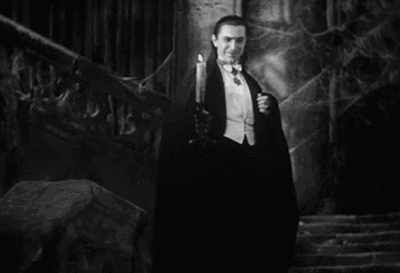
I’ve always had a thing for the dark, the macabre, the gothic, and such. Even went as a vampire for a few Halloweens. I also remember doing a book report (this is around fourth grade) for the book DRACULA DOESN’T DRINK LEMONADE, from the series THE BAILEY SCHOOL KIDS. I just thought the idea was pretty cool and creepy, and to this day? I still think vampires are pretty cool, and I sometimes incorporate them into what I write.
THE ROAMING GNOME - Around the mid-2000s, Travelocity - the online travel agency - ran a series of commercials featuring a little garden gnome with an offscreen voice. I caught a couple of the commercials circa summer 2005, one where he get zapped across a room by an electrical outlet…
youtube
And another where he gets hit by a cart at the airport…
youtube
12-year-old me thought these were the height of comedy GOLD. I quoted these constantly, and it was to the point where one of my uncles went out of his way to buy me… A whole-ass GNOME. And we had that at my dad’s place for a little while, I think it got chipped up over time or stored away somewhere. I’d love to find it again, if it’s all in one piece lol.
#Youtube#disability pride#autistic#hyperfixations#random stuff i was into#2000s#i was a weird kid#i'm still weird#1990s#90s kid
4 notes
·
View notes
Text
Dark Elves and Light Elves
Sometimes, when wars are the only thing learned in life, it becomes easy to forget how they started and none know better than this then the factions of the Light Elves and Dark Elves.
Who are they
Elves are a type of human-shaped supernatural beings in Germanic mythology and folklore. In medieval Germanic-speaking cultures, Elves seem generally to have been thought of as beings with magical powers and supernatural beauty, ambivalent towards everyday people and capable of either helping or hindering them. However, the details of these beliefs have varied considerably over time and space, and have flourished in both pre-Christian and Christian cultures.
The word Elf is found throughout the Germanic languages and it seems it was originally to have meant "white being". Reconstructing the early concept of an elf depends largely on texts, written by Christians, in Old and Middle English, medieval German, and Old Norse. These associate Elves variously with the Gods of Norse mythology, with causing illness, with magic, and with beauty and seduction.
The Elves are usually contrasted in two types: the Dökkálfar (Døkkálfar "Dark Elves", singular Døkkálfr) and the Ljósálfar ("Light Elves", singular Ljósálfr); the former dwell within the earth and are most swarthy, while the latter is "fairer than the sun to look at". This light and dark duality may have originated from Christian influence, importing the concept of good and evil, representing angels of light and darkness. A kenning for the sun in Norse poetry is Álfröðull, "elven wheel".
Origins
Just like dwarfs in my AU, elves are descendants of a group of flying arthropods resembling cicadas that feasted on Ymir’s wastes.
When the primordial giant died, the elves just like the dwarfs, evolved sapience by feeding on his flesh.
They soon migrated to a new realm, Alfheim, full of gigantic deserts and beautiful forests, with a unique wildlife, almost resembling those of the Carboniferous Period.
History
While they are intelligent and civilized beings that possess their own architecture, spoken and written languages, the Light Elves and Dark Elves have been at war for eons, always fighting over control of the Light of Alfheim, an ancient and powerful source of energy, that resides on the lake of Souls, an afterlife for every Giant, Dwarf, Elf, beast and animal who dies in the Nine Realms.
This conflict has lasted so long that neither side has secured a permanent victory. Because of such eternal war, the Elves are an isolated race, rarely interacting outside of their home realm.
However, it wasn’t always like that.
Centuries ago, the elves were originally all equal. That was until some of their kind discovered the Lake of Souls along with the Light Well. Soon, those elves began basking themselves in the Light overtime, which became an obsession and addiction. Eventually, due to having basked under the Light for a very long time, they turned into Light Elves.
To express their new selves, they began delving into art and invention. Because of their newfound power, an age of prosperity among the Light Elves had begun.
However, in the Deserts of Alfheim, where their other kin, the Dark Elves, live, the abundance of life there began to wither and die until there is none left after the creation of the temple. Seeing that the Lake of Souls is not of use for the Light Elves, and believing that they have gone too far, the Dark Elves immediately waged war, thus beginning the centuries-long conflict.
However, at some point in time, Freyr, a Vanir God, arrived in Alfheim and accidentally fell into the Lake of Light. Seeing this, the Light Elves believed him to be a god and, thus, began revering him, due to their belief, along with that of the Dark Elves, that he could bring peace between them. Under Freyr's leadership, he was able to bring control of the Light onto the Light Elves for thousands of years. Broughting total order throughout Alfheim.
However, when Freyr's sister Freya married the All-father Odin, in an attempt to end the Aesir-Vanir War, he strongly objects it and decided to abandon Alfheim, leaving it to its fate. As a result, The Light Elves, not knowing of the true reason behind Freyr's unexpected and supposed disappearance, began to believe that their lord is lost. Some assumed that he has returned to Vanaheim while others believed that he has been captured and is held in Asgard, the home-realm of the Aesir Gods.
Taking advantage of Freyr's absence, the Dark Elves, led by their late king Svartáljǫfurr, proceeded to attack the Vanir God's temple, which houses the Light. Without Freyr, the Light Elves were unable to gain the upper-hand over their dark counterparts. As a result, the Dark Elves were able to take over and secure control of the Light, covering it with a giant hive. With the Light under their control, the Dark Elves began slaughtering any Light Elf they could find, which forced them into hiding.
Not only that, the dark elves soon begin hunting the illusive and powerfull (REDACTED), using then as war-animals to keep the light elves always, however this action caused them to become extinct.
Ever since then, the Dark Elves remained in control of the Light and the Ringed Temple for a very long time until a group of foreign from another realm accompanied by a male (REDACTED) and a female (REDACTED). The Dark Elves and their king immediately welcomed them with absolute hostility and tried to take them down. However, the they would always managed to gain the upper-hand. When they reached the Light, the Dark Elves made a desperate attempt to protect their hive, but they eventually failed in the end. Ultimately, the foreigners freed the Light from the Dark Elves' grasp, allowing the Light Elves to return to the Ringed Temple.
Status
Upon regaining and securing the Light, the Light Elves began their mission to try and locate Freyr. As for the Dark Elves, however, they scrambled and went into hiding.
Dispete that, there are rumors that the Light elves are becoming more defensives, but despite all of that, the leves are still hoping that Freyr might come back to pring eace to their realm once again.
Abilities
Peak Superhuman condition: Like many other races the Elves possess an immense increase in strength, agility & durability compared to the average human being.
Speed: Elves are renown for displaying impressive bursts of speed. Though not as fast as Vampyr they exceed over the average human being moving in at 60kph, a speed enhanced to the point of making it very difficult for one to be able to react to them. As most swift Skinwalkers of this ability are biologically resistant to the side effects of moving at such speed. The Elf is able to utilise an enhanced feat of speed whilst airborne.
Agility: Elves are known for showing incredible feats of agility. Soldiers have been shown to rapidly respond or alter by adapting its initial stable configuration, in which they change the their body's position efficiently. This ability requires the Skinwalker an integration of isolated movement skills using a combination of balance, coordination, strength, speed & reflexes. The chitinous skin of the Elf is incredibly flexible & lightweight in which enables them to use such actions.
Dexterity: The Elf is capable of controlling their movements and muscles more precisely than the average human, making them unable to be clumsy or fumbling. Elves initiate a near perfect coordination and precision in which they can flawlessly perform physical tricks with both gross & fine motor skills. This allows them to perform such stunts.
Flight: Both male & female Dark Elves possess a pair of insectoid wings similar to that of Odonate insects. The flight pattern of the Elf is direct rather than indirect, with flight muscles attaching to the back. This allows the Elf an active control of the amplitude, frequency, angle of attack, camber and twist of each wing entirely independently. The normal cruising speed of an Elf averages around 70 miles per hour (112 kph), however they have been clocked at 150 mph (240 kph) without the help of a tail wind for up to half an hour at a time before tiring to an appreciable degree. Unlike dark elves, the light elves do not have wings but the light gave them the ability to levitate in the air and fly without the need for wings.
Ovipositor: Female Elves possess a hidden extendable appendage located in an abdominal cavity cushioned together by a flexible membrane within the diaphragm, this appendage is known as an ovipositor. Ovipositors are a new feature that wasn’t present previously with 1st generation Elves but became more prominent in recent generations after they arrived in Alfheim. This appendage a long muscular tube & is equipped with a piercing stinger. The functionality of the ovipositor is used transmit eggs into the flesh of living organisms in which they parasitically grow inside the hosts body in the span of 9 months. Upon hatching develop into larvae that resemble human infants with soft bleached skin, the fate of the host is dependant on the size & strength of the organism. Preferably Elves target animals in which the swarm abducts & nurtures until their initial birthing, it was made illegal by (REDACTED) that Elves target other humans as part of their cycle.
Light manipulation: Despite what many think, Light elves are incredibly powerful warriors, more than the dark elves could be In other words, this is because of their great connection with the magical light of alfheim, which gives them the ability to create powerful weapons made of magical light such as swords, knives and cannons.
Conclusion
The war between the Light elves can be seen as a great lesson on how wars can become meaningless if they forgot why they started in the first place and that, there is not always good guys or bad guys in it.
4 notes
·
View notes
Note
Hey! Not sure how many times I can request, so I’ll just make my appearance as small as I can (no promises though 😉)
B u t.
I was able to think of something else, because I was inspired by the story of Pallas and Athena (she was a daughter of Triton and friends with Athena before accidentally getting killed by her during a competition). So, how does a relationship between a child of Triton (a.k.a the reader) and Annabeth sound?
Maybe things were rocky at first, since Annabeth was a hard-to-get gal, but the more the reader protected her and went out of their way to use every drop of their power JUST for her the more Annabeth started to love them. Does that sound good?
(P.S. I don’t know why, but I can see the reader accidentally splashing Annabeth with water at one point when they tried to woo her, which ended up with her reeking of salt water for days. Also, I think you did a good job with Hecate!reader! Oh, and sorry for how long this is.)
I have no limits on how much you can request so you can send in as many as you want! I just take some time with them💀 I’m also glad you enjoyed the previous one, I had so much fun with it😍😍

I REALLY like this one because we all know how Annabeth is with stories of the gods and heros
She’s studied and remembers all of the ancient stories of Greek mythology, so it only made sense for her to avoid you after finding out your father was Triton
So while both of you know the story of Pallas and Athena, you don’t think much of it while Annabeth fully believes that history can and will repeat itself
Which is why she avoids reader to the MAX when they first meet
As much as she gravitated towards your easygoing and friendly personality, Annabeth feared that your guys’ friendship would lead to your demise one way or another
You wanting to prove her wrong on her theory, made it a point to try and be her friend, no matter what😍😍
Small talks turn into full conversations, with you mostly speaking while Annabeth tries not to give in to the temptation of continuing the interesting subjects you bring up
Imagine you standing up for her whenever Clarrise and her siblings start talking smack about her :0
“Back off Clarrise, why don’t you actually do something productive for once instead of obsessing over Annabeth.”
Cue some insults thrown your way while said girl walks away
“I had that covered Y/N, I didn’t need your help. But… thanks, anyway.”
SHES SO FLUSTERED AS SHE WALKS AWAY WHILE YOU CHUCKLE AHH
Your smile when you to bump into the girl around camp slowly breaks her resolve too
You always manage to see how her eyes light up whenever you’re around which makes your heart FLUTTER UGH
Lingering eyes on each other definitely makes Annabeth rethink her original plan on keeping her distance from you
Ok maybe it’s just me but I can see the reader being kind of a show off BUT IN A GOOD WAY
Like you’re always trying to get Annabeth’s attention one way or another, meaning that some of those ways aren’t the smartest ones
Like one time you wanted to put up a water show for the girl which ended up with her and anyone in a 100 foot vicinity to be soaked in sea water after a miscalculation on how much water you needed to complete your show💀💀
She pretended to be upset with how you made her and countless other campers smell like salt water but would bust out laughing whenever she saw you around camp for the entirety of the week
Secretly loved it though because the water smelt similar to you
Annabeth would slowly forget about Pallas and her mothers story especially after seeing you risk your life countless times for her during battles and secret attacks near the camp
Like that one time you forced her to stay within the camp grounds once you saw how she was knocked down by an angry hellhound
She can still remember being held back by some of her siblings as she watched you get ganged up by more hellhounds, watching from the side as your chest heaved in exhaustion
Remembering how she rushed to your side, gently holding your face as fear coursed through her body, watching as you took shallow breathes
It was then that she knew she grew to care about you too much to just stand by while you protected her from the monsters of the world
Her eyes still trace over the scars left behind from that battle, guilt planting itself in her heart whenever you catch her eye when she’s caught staring at you
Definitely gets frustrated at you when you don’t understand why she was so upset when you took her place in the battlefield
She cares for you too much and she would let out her confession to you in the moment
Then you would confess to her as well and basically explain why you protected her the way you did and everything would easily fall into place
Now she isn’t afraid to hold long conversations with you, but she does tend to hide her face in your shoulder when her siblings tease her about her new partner
You would definitely join in on their teasing too💀
Annabeth enjoys taking long walks beside the shore with you
Sometimes you even take her below into the cool abyss and just take her to your favorite spots in the ocean
She also enjoys being able to hug you whenever, loving how the fresh scent of the sea tends to linger on your skin URGHHH😭💔💔💔💔
IM MAKING MYSELF SAD CUZ I WANT THIS LMAO
OMG AND YOU BOTH TRACE EACH OTHERS BATTLE SCARS WHENEVER YOU GUYS CUDDLE TOGETHER I CANT💔💔
She doesn’t care about how you don’t think your actions through, she’s just supporting you all the way no matter how weird and silly they are
Like trying to balance the hilt of a sword on your forehead (homegirl was literally biting her nails in fear that the sword would fall over and stab you💀)
BUT…
Do beware, everything may seem perfect in the moment but Annabeth was correct about one thing
History does repeat itself in the end
It’s up to both of you to see if your story ends in happiness or tragedy
#pjo x reader#percy jackson and the olympians x reader#Percy jackson x reader#Annabeth x reader#Annabeth chase x reader#Annabeth chase#annabeth pjo#percy jackson and the olympians#percy jackson pjo#pjo x you#x reader#percy jackson#Annabeth pjo x reader
210 notes
·
View notes
Photo
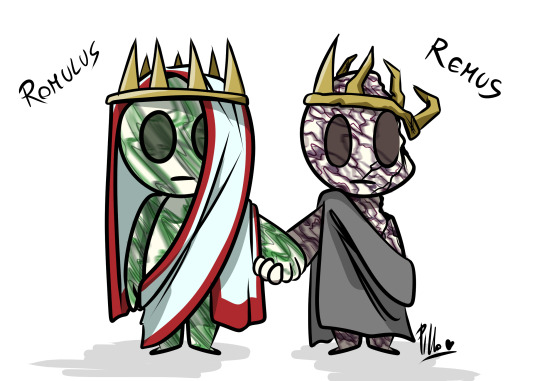
Always together, NEVER apart.
Went to Rome last weekend and came back with massive brainrot. So behold! More OCs! And an impromptu Roman History lesson, I hope you’re ready because BOY am I.
So, to keep it short, Romulus and Remus were the mythical twins that founded Rome. I’m not gonna go super into detail in their backstory, bc it’s very heavy and pretty long, so the tl; dr: Romulus and Remus were both nephews of a powerful king, and fated to build a great city. But they couldn’t both be kings, so Romulus killed Remus, after a dispute where Remus disrespected him and the city he was in the process of building. So now Romulus is king, but at what cost?
Both the twins are made of marble because flesh is too boring I guess. My first idea was to make them both bronze statues but then I realized that bronze was more of a Greek material. Romans greatly preferred marble, and imported large quantities of it from various parts of the Empire. Anyway, their situation is pretty interesting, since Romulus is the only one who could be considered “sentient” in a way, but we’re getting there. Now for the closeups!

Fun fact: cipollino marble is also known as onion stone, so if you call him onion boy, I will support it. He’s a very passive person, okay with mostly anything, even something extremely dangerous. Doesn’t really care about things like making friends or talking with people, but while he may not look for the company of others, he still enjoys a good chat from time to time. Extremely polite, unless you give him a reason not to be. He’s very protective of his twin brother, to an obsessive degree, and deeply regrets killing him. He knows he cannot erase what he has done, so he views his situation in the Basement as a sort of punishment. He’s forever cursed to drag his undead brother everywhere, as a reminder of his act.
He wears a toga praetexta, a type of toga with a red trim, usually associated with rulers, and power. Velato capite (or capite velato) literally means covered head, and it was a style of wearing the toga associated with high priests. In ancient Rome, the emperor is the highest priest of all (pontifex maximus) and while Romulus was a king, not an emperor (important difference!) I felt it was still appropriate. The crown is a sun crown (or radiate crown).

And now the him! I’m very proud of the marble effects on Remus. Anyway. He wears a toga atra, a type of dark grey (or brown) toga usually worn in periods of mourning (since he’s dead... maybe it was more appropriate the other way around but I still think it fits).
As I mentioned before, Remus is not entirely “sentient” or at least does not appear to be. He’s little more than a hollow shell in the shape of a person. He does not speak or move on his own, but can still walk and move his only arm (usually prompted by Romulus). With that being said, some believe Remus might actually talk with his brother. It’s not unusual to find Romulus deep into a one-sided conversation with his silent brother, or for Romulus to speak for him (”Remus doesn’t really like you” “Remus saw a shop over there” etc.). Nobody knows how the two communicate, or if they actually do. Some believe Remus has telepathic abilities, most think it’s just Romulus’s delusions.
Anyway, I think we’re done here! I really don’t know what else to say, except that I have no idea how they would work gameplay wise, I just wanted to do something related to Roman mythology and then one thing led to another, and now we’re here. Feel free to ask about these two! It might actually help me work out their personalities more. I would love to hear what you think of them.
38 notes
·
View notes
Note
Hi!!!!! Could I please get a ship?
I'm 18, I'm bi, I use she/her pronouns, I'm 5'3 and I'm pretty chubby, I'm black with dark skin and I have pastel pink locs right now but I like to dye my hair a lot!!!
I'm an infp and a Gemini sun, Libra moon, Gemini rising (with great decision making skills as you can imagine).
I have adhd and I tend to not speak until I'm spoken to, but once I start talking I don't stop easily lol. If I'm talking about something I'm especially interested in I can literally go on for hours at a time. I'm really into witchcraft, mythology, most cartoons, all of the twilight movies except new moon cause I don't like seeing ppl get sad, and languages, of which I'm currently learning seven (almost none of which are remotely useful lol) I especially love dead languages, rn I'm learning ancient Egyptian and Latin and I am ✨obsessed✨.
I'm a huge history nerd but I hate hearing about war and politics because they can be kinda triggering for me, i don't rlly like violence unless I know it's explicitly fake (so supernatural horror movies r usually good but if it seems to plausible I start to freak out lol). I'm incredibly sensitive but I think since I talk so much and overthink constantly I'm a lot more likely to just communicate with someone instead of arguing or fighting with them, (not that I can or would want to fight anyone I hate all physical activity so much lol) and I love love and being romanced but I have pretty bad trust issues
My favorite genre of music is probably hyperpop even though I listen to literally everything (one of my favorite songs is an Icelandic lullaby about the ghost of a child calling out to its mom) and I almost always have headphones on at 100% volume.
My receiving love languages are acts of service, gift giving, and quality time and my giving love languages are gift giving and quality time, I'll cry while watching anything even though I hate crying in front of people, and I love literally all animals (except centipedes, they scare me a lot) and would jump in front of a Mac truck for literally any stray cat, and I can and have walked into mildly unsafe areas for the sake of getting a better glimpse at some raccoons
!!! <3 <3 <3 thank you!!! I hope you're having a good day !!!
i had so much fun writing this?! i hope you enjoy it! also i’m so sorry i haven’t been very active this week:( i’m getting stuff written i promise! anyways, i ship you with…
SIDNEY PRESCOTT!

- i feel like this poor girl would drool over you 24/7
- please let her help you dye her hair.
- she's too scared to dye her own hair so she’d love to do your’s instead!
- she can totally understand the whole not speaking unless spoken to thing
- i have such a strong feeling that this girl is super duper shy so please don’t stop talking! maybe add her into the conversation too! - loves to hear you talk.
- please tell her about your day!?!
- sidney would love the twilight franchise. i know it.
- watch them with her!
- you watch cartoons too? name your favourites to her and you two will watch them all night.
- will sit there in absolute shock when you speak to her in a different language.
- she finds it beyond attractive.
- “where did you learn that, doll?”
- loves the fact that you dont quite do slasher films because of her past trauma... obviously.
- but if one day you decide to watch a slasher film that isn't too gory or doesn't show much violence then she’ll be willing to watch it with you as long as you're comfortable!
- just please cuddle her. she needs it
- she promises she’ll cuddle you back!
- i’m convinced you would barely fight.
- you're both willing to talk about what's bothering you and unlike her ex billy, you wont scream (wink wink) and shout at her.
- would definitely take her a while to get into hyper pop but i feel like she’d quite enjoy it!
- loves when you give her gifts and will give you the cutest shit as a thank you.
- WILL GET YOU A CAT AS A GIFT!!!!!!
- and will kill centipedes for you even though she's quite scared of them herself
- what can i say! she loves you.
#sidney prescott#sidney prescott x reader#sidney prescott smut#sidney prescott imagines#scream#Scream 1996#scream gifs#scream imagine#scream x reader#neve campbell
68 notes
·
View notes
Text
Choosing the right pagan path for you

Finding a religion is kind of like dating — you need to really know yourself before you can know what you need from a religion (or a romantic partner). And, like with dating, there’s a lot of weird stigmas and social expectations around religion. A lot of people want to settle down with the first one they kind of vibe with instead of taking the time to see what’s really out there. But if you really want to be happy in the long term, you’ll need to have a little patience and be willing to do some exploration.
Getting to know yourself is crucial to a healthy spiritual life, no matter what your religious or spiritual beliefs are. Get comfortable with who you are and what your spiritual needs are, then start looking for a system that meets those needs.
Need a place to start? Try interviewing yourself! Here are some questions you may want to include in your self-interview (make sure to write them down!):
What, if anything, do you absolutely know, beyond a shadow of doubt, is true? What, if anything, do you absolutely know, beyond a shadow of doubt, is not true? Do you believe in absolute good and evil? Do you believe in, or are you open to believing in, reincarnation? What about the existence of the soul? What about an afterlife? Do you believe in fate? What about karma or a similar concept? Do you believe that everyone and everything is connected, or are you more of an individualist?
It’s also helpful to go ahead and figure out where you stand on certain religious concepts that are common in paganism. For example, are you a monist, a soft polytheist, a hard polytheist, or a pantheist? Do you feel you’d do better with a neopagan system, a reconstructionist system, or a revivalist system?
Answering these questions will help you start to identify what your core beliefs are and what you need from a religious system. Keep your answers handy. As we explore different pagan religions in future posts, compare their theology and philosophy to your answers. This will help you determine whether any given system is a good fit for you and your existing beliefs.
Remember, most pagan faiths are not exclusionist — they acknowledge the value and truth of other religions. Choosing a pagan path isn’t about finding the One True Religion. It’s about finding the best religion for you. You’re unlikely to find a system that you agree with 100% right off the bat, but you should agree with enough core theology that you aren’t uncomfortable. I firmly believe that religion should challenge us and help us to grow, but it definitely shouldn’t be triggering or upsetting. You want to find that sweet spot where you’re comfortable but still have room for growth.
They say that when choosing a romantic partner, you should look for someone you agree with 90-95% of the time. This similarity in belief and opinion gives you a solid foundation to build on, but the 5-10% disagreement keeps your relationship from becoming an echo chamber. I think this is also an excellent rule to follow when choosing a religion.
Once you’ve taken stock of your own beliefs, it’s time to consider your interests. Is there a certain system you feel drawn to? If so, that would be an excellent place to start your research!
For example, maybe you were obsessed with Greek mythology as a kid — if so, you may want to start by investigating Hellenismos, the worship of the ancient Greek gods. Maybe you grew up Catholic and always felt a close connection to Mother Mary — you may want to investigate Goddess worship. Or maybe you’ve always resonated deeply with the figure of the witch in fiction and folklore — you may want to investigate Wicca. Starting with a system you already have an interest in will keep your research fun and exciting. You may or may not choose to consider your cultural heritage when choosing a starting point for your study of paganism. If you feel closely tied to the culture of your ancestors, you might start by learning about the gods they originally worshiped.
Let me make one thing clear: the gods do not care about genetics. If you feel drawn to the Norse gods, for example, it does not matter if you have Scandinavian heritage or even European heritage. What matters is whether you’re willing to uphold the values and practices of Norse paganism. Don’t let a lack of an ancestral link keep you from pursuing a religion that interests you!
(Of course, ethnic religions do exist, and some of these systems are closed to outsiders. Judaism and Voodoo are good examples of this. However, all of the systems I’ve mentioned in this post, and all of the ones I’ll be covering in this series, are open to anyone regardless of their ethnicity.)
You may not feel connected to your cultural heritage at all, and you may not even consider it as you explore paganism. That’s fine! Just know that it does offer another possible entry point into the big, wide, diverse world of pagan religion.
You should also consider whether any pagan religions are more readily accessible to you than others. Do you have a friend who is already a practicing pagan and would be willing to take you under their wing? Do you live in a country where certain deities used to be worshiped and have access to historic sacred sites? Are there local pagan groups in your community? Consider these resources when deciding where to start your research. The good news is that, with the Internet, you’ll have access to any system you feel attracted to, at least online.
One of the most common accessibility issues pagans run into is a language barrier. This is especially true for reconstructionists and revivalists. Unless you speak fluent Irish, you’ll probably have to rely on English translations for your research of Irish mythology, for example.
Finding quality translations is essential. A translation error can sometimes change the entire meaning of a poem or myth! The best way to find good translations is to ask other pagans. Don’t be afraid to ask someone more experienced for book recommendations!
Once you’ve chosen a starting point for your research, the next step is to start reading! (Still not sure where to start? Don’t worry! In the next several posts in this series, I’ll introduce you to some of the most popular pagan paths and provide resources for more in-depth study.)
Choose your sources carefully. I try to read an even mix of academic sources (which tend to be less biased) and sources from pagan authors — this helps me get a more nuanced understanding of the system I’m studying. Be wary of any resource that denies science, revises history, or contradicts other authorities on the subject. Also be wary of any pagan author who fills their work with opinion and personal experience, without any research to back it up. Basing your practice on good sources will help you start off on the right foot with your worship of the gods.
It’s important not to rush this research process. While it’s true that you can’t truly learn a spiritual system from books, it’s also true that things tend to go more smoothly if you know what you’re doing. Once you’ve got a solid grasp of the basics of your chosen religion, you’re ready to begin practicing! Start using what you’ve learned from your research to create a religious practice. This may include creating an altar or other sacred space, making offerings to deities, or performing some other daily ritual. My advice is to start small — don’t feel like you have to become a high priest(ess) overnight.
Your practice may change as you become more experienced, and that’s a good thing. People change, and it only makes sense for our spirituality to change with us. Never be afraid to experiment in your pagan practice. This should be a fun and exciting journey!
#paganism 101#pagan#paganism#religion#spirituality#spiritual#baby pagan#wicca#wiccan#feri#reclaiming#goddess worship#celtic paganism#irish paganism#hellenismos#hellenic polytheism#hellenic paganism#religio romana#cultus deorum#roman polytheism#roman paganism#heathenry#heathen#norse paganism#kemetic polytheism#kemetic paganism#animism#eclectic pagan#witchblr#witch
430 notes
·
View notes
Note
Can I have a twst matchup?
I’m a cis female, around 163 cms tall. I have a rather average figure, although I’d say I’m slightly curvier around the hips and waist. Appearances arent that important for me personally, and as such I don’t have a certain fashion style and usually just wear whatever I can—normally skinny jeans, strappy sandals, plaid button ups, and plain t shirts. I have mid back length black hair that always seems to be a little bit messy and dark brown eyes bordering on black, and I’m quite pale.
I’m not super outgoing and dont like to approach others on my own, but I’ll engage in conversation if someone talks to me first. I’m an INFP and can be sensitive to what others think about me.
I’m not above defending myself, both physically and verbally when needed, and while I don’t consider myself a violent person, I admit that I kind of get a thrill out of putting others in their place. The others being bullies, rude, or inappropriate people.
I have an obsessive personality at times—I can infodump on my favorite topics to anyone that’ll listen, and I’m super attached to things that interest me: ancient mythology, old literature, classical art, theater, medieval history to name a few. I have a thing for stuff considered vintage or old. This obsession extends to academics too, I tend to do extremely well in subjects I’m interested in with little effort, and fall behind in those I find boring. I don’t like sports that much, but do partake in horseback riding, fencing, and ice skating. Despite this I’m still rather klutzy.
I’m not the most physically affectionate person, and would prefer someone who likes intimacy behind closed doors. I prefer showing affection verbally through cute nicknames or words of affirmation, whereas the way to win me over would be buying me gifts I like or just good food.
Other things about me: I pride myself on being a good secret keeper and a good listener, but rarely talk about my own feelings to others. I try to be polite and personable, but I do lose my temper from time to time. Finally, I’m definitely more of a follower than a leader, but I’ll lead if no one else can or I’m forced to.
I will match you up with...
Riddle!!
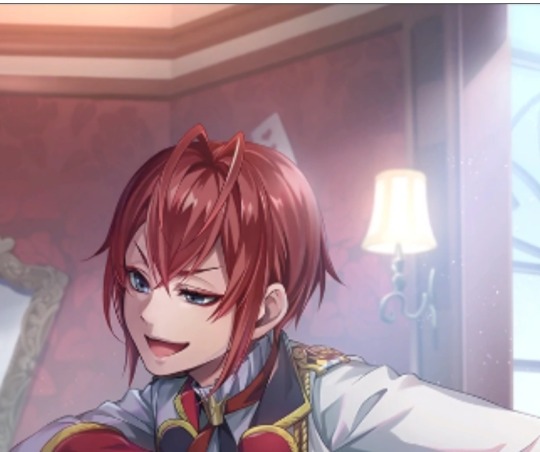
This is also matchuped due to your personalities being almost exactly the same.Riddle is also a fan of cozy and classic things since this was the kind of aesthetic he grew up in. So it is pretty nostalgic for him. This also means he shares the same interest for academics and classic things as you which also means that you two will never run out of conversations.
-He understands if you hate PDA since he would most likely hate it too since he does get quite shy with women especially in public and he can't really deal with that kind of pressure.As for you being cis, he really doesn't mind and actually admires the fact that you did something about it rather than mope around about it.
-If you enjoy stuff like horse riding, you are in luck, he would probably recommend you to join him on the equestrian club where you both end up spending more time together.
-As long as you give Riddle some sort of affection(behind closed doors) and some sort of praise he will be a happy man. He also wants you to be happy too since he actually loves seeing you smile so he will always bring gifts to you some days a week so he is also looking out for your love language.
One issue would be your clumsiness, he does tend to lose temper quickly but when he gets used to it, he would probably just sigh or something. Plus, you are the reason why he starts to be extra careful with you and always bringing some band aids/bandages.
#twisted wonderland matchup event#twisted wonderland matchup#twst match up event#twst matchup#twisted wonderland#twst#twst x reader#twisted wonderland x reader#twst scenarios#twisted wonderland fluff#twst fluff#twst headcanons
5 notes
·
View notes
Text
SpellJammer: Shadow of the Spider Moon (Additional Campaign Materials)
part of the Player’s Packet (ver 1.3)
for use with the First Edition Pathfinder Role-Playing Game
by Clinton J. Boomer
with special thanks to Andy Collins, Scott Schomburg, Chloe Michelle, Dennis Detwiller, David Gerrold,and George Loki Williams
additional campaign materials may be found here
All SpellJammer: Shadow of the Spider-Moon campaign materials are brought to you absolutely free to play, to test & to share, as always, now and forever, by the fine folks of my Patreon.
RELIGION ACROSS PYRESPACE
Yondalla and Her Saints: The Hin – and, by extension, all those they conquer – practice a monotheistic faith, worshiping a single bountiful earth-mother-deity, Yondalla, alongside an astonishing number of her Saints; the Church also recognizes the power of Asmodeus, King of Hell and Master of Devils, who is commanded by Yondalla to punish the wicked.
Technically, Asmodeus and his Seven Devil Princes – Dispater, the Iron King; Mammon, the Spirit in Gold; Belial, the Pale Kiss; Geryon, the Serpent; Moloch, the Ashen Bull; Baalzebul, Lord of the Flies; and Mephistopheles, the Merchant of Souls – are all Saints of the Church.
The Ordo Repentia Infernalis serves as the “secret” inquisitorial arm of the Church: dedicated to the tracking & execution of heretics, especially (but not limited to) worshippers of Dagon.
Many of the other Saints recognized by the Church of Yondalla are, in point of fact, actually deities once worshiped by various (now conquered) human cultures, deemed inoffensive enough to be folded into Mother Church as “blessed of Yondalla, beautified in her holy light”.

Direct worship of these Saints is illegal (a form of idolatry), but observation of a Saint’s holy day — in accordance with Church Law — is encouraged. In some of the more culturally relaxed parts of Cyrrolaelee, for example, prayers to Saint Fharlanghn are as common as prayers to Yondalla.
Other Saints, such as St. Davian, are near-mythologized historical figures.
---
Corellon and Lolth: To be clear, “worship” is a strong word.
That said, the elves of Perianth venerate quite deeply the honored, immortal founders of their august race, seeking the guidance and blessing – in equal measure – of their Emperor and Empress in all things.
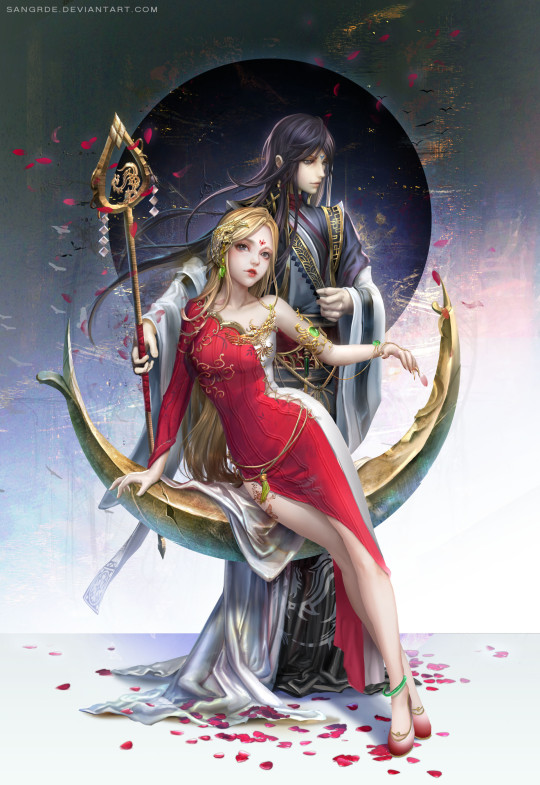
The Western Courts identify Corellon as a sun-deity (the Phoenix Emperor) and Lolth as a moon-goddess (the Beautiful Eclipse), while the Eastern Courts refer to Corellon as a lunar deity (the Moonlit Dragon) and Lolth as a sun-goddess (the Crimson Empress).
No matter the court, Corellon is regarded as master over the wild Seelie, while Lolth is understood to be mistress over the demonic Unseelie.
---
Dagon: The single unifying, founding principle of the Ordo Repentia Infernalis is to seek-out the extermination of Dagon, the Shadow in the Sea, false god who sleeps beneath the waves, and of all who bow in fealty to him.
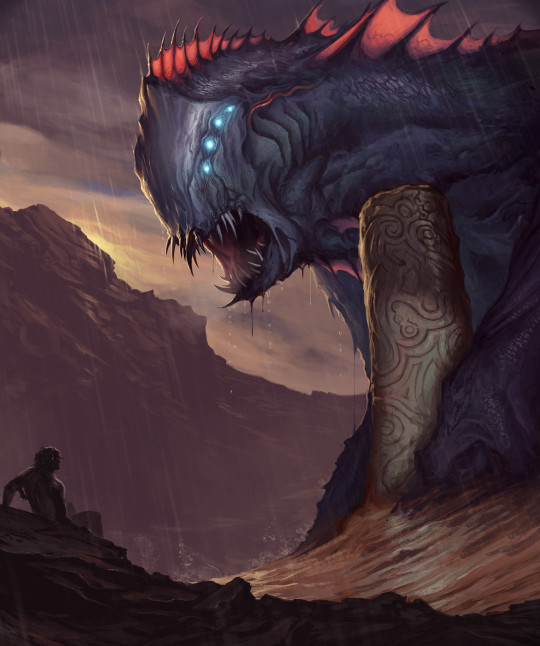
Of his horrid church, little enough needs be known: wicked dreams born of his thrashing nightmares in the black Abyss at the bottom of the world corrupt men to heresy, blasphemy, cannibalism, witchcraft, transmutation into horrid monstrosities of the deep, and human sacrifice.
The Court of Dagon
Although the vast, dark Shadow in the Sea is commonly understood to act, moment to moment, as the simplest and most ravenous of oceanic beasts -- an unthinking, thrashing monster of pure bloodthirsty instinct and hatred -- the Church of Yondalla identifies seven wicked spirits that serve him: dancing about his throne, attending to his every whim.
Shax, Demon Lord of Envy & Murder
Xoveron, Demon Lord Gluttony & Ruin
Areshkagal, Demon Lord of Greed & Riddles
Nocticula, Demon Lord of Lust & Beauty
Socothbenoth, Demon Lord of Pride & Perversity
Jubliex, Demon Lord of Sloth & Filth
Orcus, Demon Lord of Wrath & the Dead
The Inquisition makes special effort to watch the gargoyles under their care and in their service, as the race was known -- in ancient days -- to serve the demon Xoveron; many clergy members require that gargoyles under their command remain upon a strict diet, so as not to temp the spirit of gluttony.
---
Vasalissa the Beautiful: So little of “original” gnomish culture survives to the modern era – in the wake of countless cataclysms – that no unifying “faith” can be said to unite the diaspora of what was once the Circle of Gold.
That said, gnomes and warforged light candles and whisper quiet prayers to Vasalissa the Beautiful: a clever, tenacious protagonist who appears again and again across the deep storytelling tradition of the gnomish people: a sprawling, multilayered weave of tales that stretch back to the time of their world’s pre-history, the memorization of which borders on the spiritual.
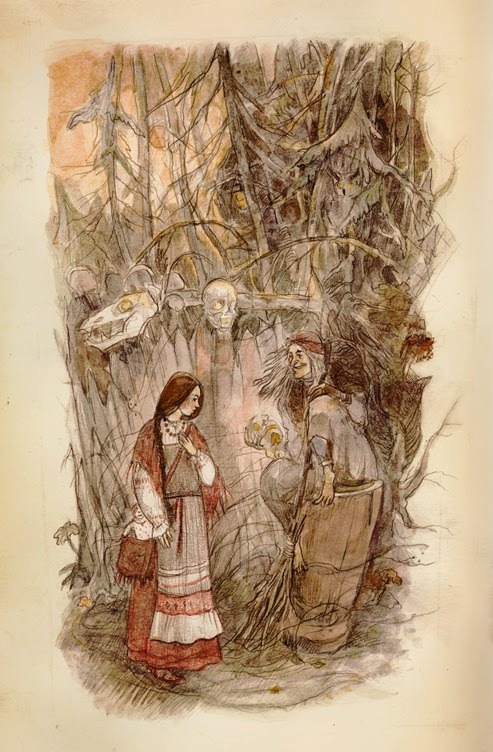
Common tales in the canon – upon which every TRUE storyteller is expected to add his or her own unique twists – often deal with the trials, misadventures, and misfortunes of Vasalissa and a few other stock characters:
Mother Kindness (also called ‘Grandmother Kindness’)
The Child Dreamer
Greedy Glitterpot & Lumpy Fathead
The Hungry Baby
Elder Tree
The Honest Youth (sometimes ‘The Two Honest Youths’)
The Farmer’s Wife
Mocho & Pocho (one of whom is always hungry, and the other of which is always sleepy)
Cleverest Jack (sometimes with his twin brother, Mister Hubris)
The River Serpent
The First-Forged, and his three children: Stone, Wood, and Tin
Mean-Old-Two-Heads, the Giant
The Silent Wolf
Curiously, the natives of Fenris tell fantastic tales, in their own languages, nearly identical to the ancient legends of Vasalissa and her many adventures.
---
Cult of the Dragon Moons: As far as the Chirch of Yondalla is concerned, this organization is merely a group of deluded Dagon-worshipers seduced into a bizarre heresy obsessed with returning-to-life the ancient “dragons” that are said to have once ruled Pyrespace.
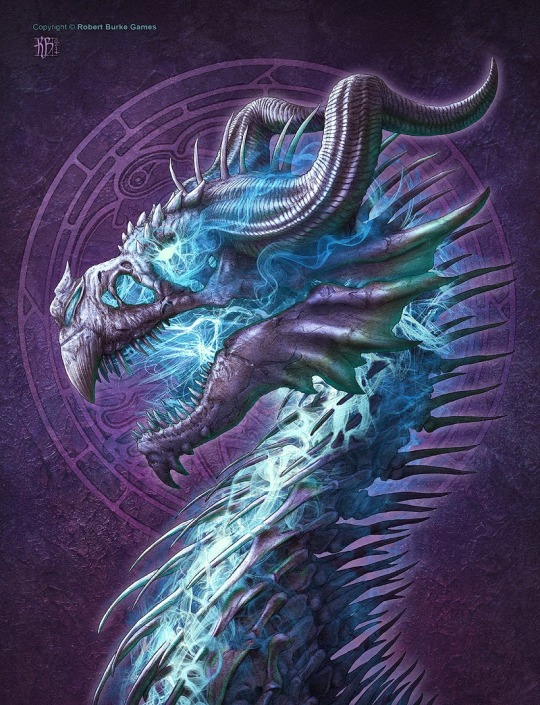
This bizarre faith is known – and possibly native – to every world in the system, but is most prevalent in the jungles of Verdura and across the dunes of Ashen.
---
Moradin: The dwarves do not speak often of their religion, but keep it close to heart: burning, eternally, in a fortress of stone buried beneath their breast.
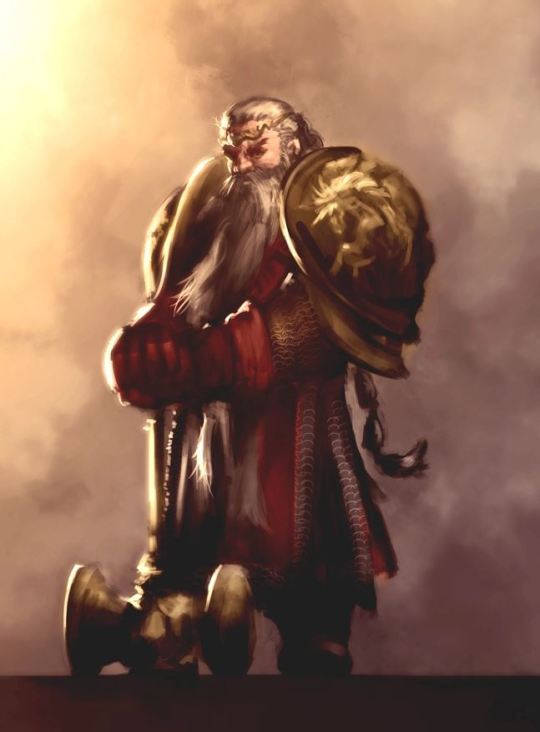
———
PYRESPACE TIMELINE
This timeline is based on the Yondallan calendar, which dates events to before and after the defeat of the giant Gol’Kaa by St. Davian (‘Ano Davia’ or the Year of Davian) and the subsequent rise of the Hin as the dominant form of life on Quelya.
Although years, months and even days are difficult to translate between planetary bodies, this single system is still the most frequently used: the current official time and date are tracked at the Great Clockhouse of Lagas, maintained by the Church of Yondalla, and backed-up in the nation-city of Beshaba.
The average occupant of the system does NOT know most of these dates nor the majority of the information presented here, with perhaps the exception of bolded items; these more-detailed notes are included simply for player reference, especially for the benefit of characters with an education in system-wide history.
—–
???? – the mysterious Precursors reign undisputed over the entirety of Pyrespace, preforming such impossible miracles as seeding humans across the system, uplifting the Crown of Sapphire to serve as a miniature star, crafting the Hole in the Infinite (a wormhole in orbit around the Crown of Sapphire), crafting the Celestial Pearl (for reasons unknown), establishing a number of now-fallen megastructures (cities, temples, and more esoteric objects) on every known world, and – according to several ancient records – the establishment of a now-vanished interplanetary “web-way”.
-1500 A.D. (approximate): The eastern and western courts of the elves unite beneath a single banner; the elven empire is established on Perianth under the immortal guidance of Corellon Larethian and his bride Lolth.
-1500 A.D. (approximate): The dwarven clans of Moradin’s Forge cease open hostilities with one another, establishing an uneasy truce in the face of heightened goblin aggression.
-1500 A.D. (approximate): On the Circle of Gold, conflicts between gnomes and ratfolk enclaves escalate into the First Rat-Slaughter; first generation warforged created; in the wake of their victory, gnomes begin experimentations in the craft of clockwork and establish significantly larger cities.
-1099 A.D.: Unexpected disaster strikes the gnome home-world, destroying much of their culture’s history and technological progress.
-807 A.D.: The five elven noble houses serving beneath House Larethian are founded in full.
-787 A.D.: Unexpected disaster strikes the gnome home-world, destroying much of the culture’s history and technological progress.
-391 A.D.: Unexpected disaster strikes the gnome home-world, destroying much of the culture’s history and technological progress.
-218 A.D.: The nation of Kozah-Talos (a human nation controlling much of what would later become Brandobaris) finish their conquest over the human nations of Malar and Umberlee (which occupied what would later become Arvoreen), uniting the majority of Quelya’s sole continent under a single war-banner: leaving only the human nation of Auril and the wild deserts surrounding the City of Beshaba outside of their control.

-205 A.D.: A diplomatic accord is reached; the nations of Kozah-Talos and Auril unite to form the modern nation of Brandobaris; distant ports and holdings of Old Auril – including the “Cities of Sisterhood,” Shar and Selune – secede, declaring themselves independent (as the Isles of Tymora).
-197 A.D.: Arvoreen established as single nation under Brandobarin control; Arvorean land used as a “training ground” for Brandobarin officers and a proving-ground for both troops and tactics for use in wars against Cyrrollalee, Urogolan, and the Isles of Tymora.
-101 A.D.: House Larethian defeats a great enemy, further uniting the noble elven houses.
-17 A.D: The lands of Arvoreen are fully pacified under Brandobarin control.
0 A.D.: St. Davian defeats the giant Gol’Kaa, the last human king of Beshaba, in single combat; he and his armies establish the greater Church of Yondalla across the surrounding lands, extending into Arvoreen.
13 A.D.: Unexpected disaster strikes the gnome home-world, destroying much of the culture’s history and technological progress.
92 A.D.: Brandobarin aggression against Cyrrollalee abandoned.
138 A.D: Brandobarin aggression against Urogolan abandoned.
211 A.D.: The nation of Brandobaris unofficially cedes control of Arvorean land to the rule of local warlords (and to the expanding Church of Yondalla).
327 A.D.: The Church of Yondalla controls the entirety of the Rio Provendor from Beshaba all the way south to the World Ocean; the port-city of Lagas is founded at the mouth of the massive river (on Arvorean lands).
354 A.D.: The last human king of Arvoreen abdicates his throne in the face of famine, riots, and threats of civil war; the Church of Yondalla declares Lagas the new capital city of Arvoreen and rapidly puts an end to the uprising, ensuring lasting peace and Hin dominance of the nation.
371 A.D.: Unexpected disaster strikes the gnome home-world, destroying much of the culture’s history and technological progress.
459 A.D.: War breaks out along the Rio Provendor between the Hin-controlled nation of Arvoreen and human-controlled Brandobaris.
522 A.D.: Brandobaris invaded by raiders from Urogolan.
606 A.D.: The last human king of Brandobaris is executed, ceding total control of the Green Fields to Hin dominance and the oversight by the Church of Yondalla; raiders from Urogolan expelled.
616 A.D.: The Unseelie War begins; House Larethian splits, with a third of the House choosing the side of Lolth; Corellon vanishes; elves create the first SpellJamming vessels.

651 A.D.: First Crusade of Tymora begins, as the Church pushes to claim the island chain; the famed “Cities of Sisterhood” – Shar and Selune – are renamed ‘Dallah’.
727 A.D.: Unexpected disaster strikes the gnome home-world, destroying much of the culture’s history and technological progress.
729 A.D.: Second Crusade of Tymora begins, pushing from the occupied city of Dallah.
783 A.D.: King Ulliam of Cyrrollalee is gifted the legendary blade Caladcholg, symbol of his family and of the rightful rule over the Isle.
859 A.D.: The Unseelie War ends; House Larethian retreats to Perianth; House Lolth and loyalist “drow” imprisoned upon the Spider-Moon; the elven people abandon use of SpellJamming technology.
807 A.D.: Third Crusade of Tymora begins, fighting island-by-island to Perryroyal.
921 A.D.: Port of Perryroyal fully pacified under the Church of Yondalla.
928 A.D.: Gnomes independently develop SpellJamming technology, rapidly expanding beyond the Circle of Gold to explore the other moons orbiting the Crown of Sapphire.
971 A.D.: All elves and drow born before this date have since passed on.
972 A.D.: Gnomes establish the first of several small colonies on Fenris.
988 A.D.: Trade between Xhiaae-Lan and Perryroyal established.
1001 A.D.: All contact with the gnomish colonies on Fenris is lost.
1008 A.D.: Urogalandic attacks on Hin soil spur the Church of Yondalla to war; the Siege of Mordheim begins.
1051 A.D.: Gnomes make first contact with the dwarves of Moradin’s Forge, allowing the two races to begin trade; first dwarven SpellJamming vessels are prototyped.
1069 A.D.: Unexpected disaster strikes the gnome home-world, destroying much of the culture’s history and technological progress.
1101 A.D.: First dwarven SpellJamming vessels are completed.
1118 A.D.: Perryroyal lost to attacks by cults of Dagon.
1123 A.D: Dwarves establish total control over all moons orbiting Moradin’s Forge and begin exploration of Fenris.
1221 A.D. All gnomes born before this date have since passed on.
1227 A.D.: Dallah and the island-chain of Tymora lost to attacks by cults of Dagon.
1271 A.D.: All dwarves born before this date have since passed on.
1283-1289 A.D.: City of Lagas assaulted by cults of Dagon.
1292 A.D.: Gnome explorers pass beyond the Celestial Pearl, establishing Zionil Station, and make first contact with the elves of Perianth.
1307 A.D.: Einar Jarlsenn, the last human king of Urogolan, is slain as the Siege of Mordheim finally breaks the “unconquerable” fortress.
1313 A.D.: Island-chain of Tymora retaken from cults of Dagon.
1321 A.D.: City of Dallah retaken from cults of Dagon.
1333-1370 A.D.: The Hole in the Infinite opens, releasing Hive entities onto the moons orbiting the Crown of Sapphire; elves establish a quarantine-zone at Zionil, barring all travel in-system from areas infected with the Hive contagion.
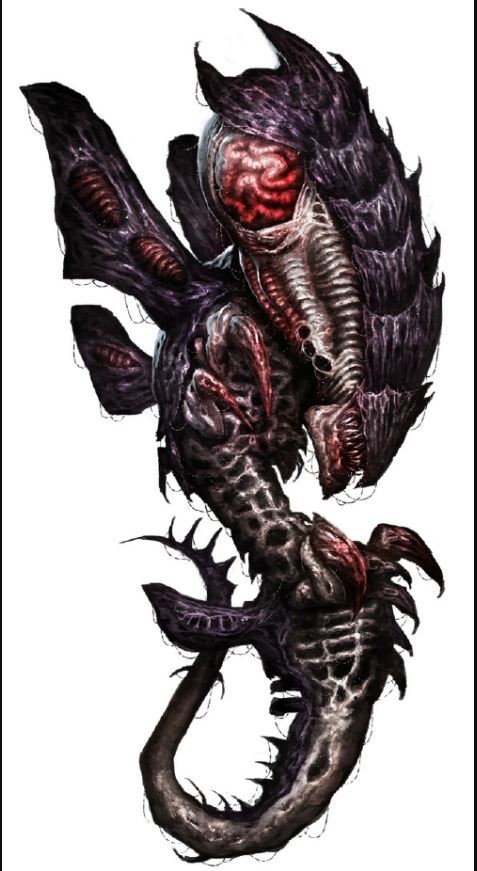
1342 A.D.: Second-generation warforged developed by gnome engineers.
1366 A.D.: Merchant-families and moneylenders in Lagas successfully lobby for greater greater involvement in the politics of Arvoreen and Brandobaris, displacing many hereditary noble families.
1391 A.D.: Perryroyal retaken from cults of Dagon.
1408 A.D.: Inaugural temple dedicated to the Church of Yondalla established on the soil of Xhiaae-Lan.
1416 A.D.: Hive menace to gnomish space successfully contained to five moons: Flandal (Hive Colony Nehemoth), Segojan (Hive Colony Euclid), Baervan (Hive Colony Keter), Baravar (Hive Colony Thaumiel), and Urdlen (Hive Colony Apollyon)
1419 A.D.: Unexpected disaster strikes the gnome home-world, destroying a dangerously large portion of the culture’s history and technological progress; off-world gnome colonies successfully mitigate the very worst of the disaster.
1459 A.D.: First Cyrrolaelan Crusade begins.
1463 A.D.: Hive Colony Nehemoth successfully eradicated from Flandal; third generation warforged developed.
1477 A.D.: Second Cyrrolaelan Crusade begins.
1491 A.D.: Third Cyrrolaelan Crusade begins.
1492 A.D.: The Circle of Gold – the gnomish home-world – is destroyed in a horrific cataclysm, forming the Chain of Tears. Gnomish history, technology, and culture suffer incalculable loss.
1493 A.D.: Shao Liang, the last human king of Xhiaae-Lan, surrenders his lands to the Church of Yondalla; peace treaty is signed at Perryroyal.
1502 A.D.: First contact is made between Elves and Hin; Hin become a SpellJamming culture.
1507 A.D.: Dún Ailinne, former capitol city of Cyrrollalee, is utterly destroyed; the human courts of Cyrrollalee abandon their cities for the countryside, forming a government-in-exile.
1521 A.D.: All Hin born before this date have since passed on.
1536 A.D.: All half-elves born before this date have since passed on.
1551 A.D.: Eldest playable elven/drow characters born.
1582 A.D.: The last human kingdom on Quelya falls when King Fergus mac Róich of Cyrrollalee is killed by an elven military force allied with the Church of Yondalla; the ancestral blade of King Ulliam’s line is subsequently lost, and Cyrrollalee becomes a protectorate of Arvoreen. The city of Moander is built on the ruins of Dún Ailinne.
1603 A.D.: New Arvoreen established on Verdura.
1607 A.D.: Youngest playable elven/drow characters born.
1608 A.D: Armed peasant rebellion put down in Cyrrollalee.
1611 A.D.: All humans born before this date have since passed on.
1614 A.D.: The city of Salt Lake established on Ashen.
1619 A.D.: Contact lost with the city of Salt Lake; remnants never recovered.
1622 A.D.: New city of Salt Lake established on Ashen.
1627 A.D: Eldest playable gnome characters born.
1628 A.D.: Armed peasant rebellion put down in Cyrrollalee.
1630 A.D.: City of Salt Lake suffers 80% casualties after sandstorm.
1632 A.D.: City of Salt Lake rebuilt and reinforced with new colonists and heightened security.
1634 A.D.: On Ashen, work begins on the city of Core.
1636 A.D.: New Arvoreen on Verdura significantly expanded.
1639 A.D.: Eldest playable dwarf characters born.
1640 A.D.: City of Salt Lake successfully repels inclement weather, suffers 30% casualties.
1646 A.D.: City of Core declared fully operational.
1648 A.D.: Reserves from Salt Lake assist the city of Core during a mining incident.
1652 A.D.: Peasant rebellion in Cyrrollalee successfully expels Hin occupying forces, destroying several Arvorean military bases and Yondallan holy sites; using stolen ships, rebellion attacks and burns several coastal villages on Arvorean soil before retreating.
1656 A.D.: City of Salt Lake suffers 50% casualties during small seismic event.
1658 A.D.: Populations of Core, Salt Lake, local mining operations, and surrounding farms are bolstered by arriving waves of indentured settlers: human sentenced to penal transportation.
1661 A.D.: The mining-station of Chaldira in founded on Fenris.
1667 A.D.: Nation of Markovia founded on Verdua; diplomatic trade established with New Arvoreen.
1669 A.D.: City of New Arvoreen significantly expanded.
1674 A.D.: Salt Lake survives minor meteorological event; rates of the forcible immigration of incarcerated humans to Ashen doubled.
1676 A.D.: Eldest playable Hin characters born.
1677 A.D.: Youngest playable gnome characters born.
1678 A.D.: Youngest playable dwarf characters born.
1680 A.D.: Arvorean armada successfully retakes Cyrrollalee, imposes the Purge of Moander.
1683 A.D.: Eldest playable half-elf characters born.
1684 A.D.: Punishment via ‘transportation to Chaldira’ instituted by Church of Yondalla; operations on Chaldira expand significantly.
1691 A.D.: Disruptions by local wildlife impose 10% casualties on Salt Lake.
1694 A.D.: Eldest playable human characters born.
1699 A.D.: Armed peasant rebellion put down in Cyrrollalee.
1699 A.D.: Youngest playable Hin characters born.
1700 A.D.: Youngest playable half-elf characters born.
1701 A.D.: Brandobarin facility of Acheron founded on Ashen.
1702 A.D.: New Arvoreen significantly expanded; land officially cleared for Covington Farms, soon to be the largest agricultural facility in the system; rates of forcible immigration of indentured humans to New Arvoreen tripled.
1703 A.D.: City of Salt Lake establishes new oil fields under supervision of Acheron.
1705 A.D.: Youngest playable human characters born.
1708 A.D.: The Illithid first arrive at the edge of Pyrespace, immediately striking at the inhabitants of Moradin’s Forge and the Forge-moons, establishing a base of operations on the planet’s inhospitable surface.
1711 A.D.: The last holds of Clan Stonehall finally fail before the combined might of illithid forces, bolstered by a united army of goblins, hobgoblins, orcs, and ogres. No independent dwarven communities remain on the Forge (nor on the Forge-moons), and the home-world of the dwarves is effectively lost.
1715 A.D.: The Illithid release the Drow from their moon-prison, beginning the age of dark elven piracy across Pyrespace.
1719 A.D.: City of Salt Lake suffers 20% casualties in a series of minor industrial accidents.
1721 A.D. (current year): Campaign begins.
44 notes
·
View notes
Text
The Supernatural 70s: Part I - Corruption of An Innocent
"We're mutants. There's something wrong with us, something very, very wrong with us. Something seriously wrong with us - we're soldiers writers."
-- with apologies to the screenwriter of "Stripes"
Dear reader, I have the darkest of revelations to make to you, a truth when fully and wholly disclosed shall most assuredly chill you to the bone, a tale that shall make you question all that you hold to be true and good and holy about my personal history. While you may have come in search of that narrative designer best known for his works of interactive high fantasy, you should know that he is also a crafter of a darker art, a scribbler of twisted tales filled with ghosts, and ghouls, and gargoyles. I am, dear innocent, a devotee of horrors! Mwahahahaha!
[cue thunderclap, lightning, pipe organ music]
Given the genre of writing for which most of you know me, I forgive you if you think of me principally as a fantasy writer. I don't object to that classification because I do enjoy mucking about with magic and dark woods and mysterious ancient civilizations. But if you are to truly know who I am as a writer, you must realize that the image I hold of myself is principally as a creator of weird tales.
To understand how and why I came to be drawn to this sub-genre of fantastic fiction, you first must understand that I come from peculiar folks. Maybe I don't have the Ipswich look, or I didn't grow up in a castle, but my pedigree for oddity has been there from the start. My mother was declared dead at birth by her doctor, and often heard voices calling to her in the dead of night that no one else could hear. Her mother would periodically ring us up to discuss events in our lives about which she couldn't possibly have known. My father's people still share ghost stories about a family homestead that burned down mysteriously in the 1960s. Even my older brother has outré memories about events he says cannot possibly be true, and as a kid was kicked off the Tulsa city bookmobile for attempting to check out books about UFOs, bigfoot, and ESP. It's fair to say I was doomed - or destined - for weirdness from the start.
If the above listed circumstances had not been enough, I grew up in an area where neighbors whispered stories about a horrifically deformed Bulldog Man who stalked kids who "parked" on the Old North Road near my house. The state in which I was raised was rife with legends of bigfoots, deer women, and devil men. Even in my childhood household there existed a pantheon of mythological entities invented explicitly to keep me in line. If I was a good boy, The Repairman would leave me little gifts of Hot Wheels cars or candy. If I was being terrible, however, my father would dress in a skeleton costume, rise from the basement and threaten to drag me down into everlasting hellfire (evidently there was a secret portal in our basement.) There were monsters, monsters EVERYWHERE I looked in my childhood world. Given that I was told as a fledgling writer to write what I knew, how could anyone have been surprised that the first stories I wrote were filled with the supernatural?
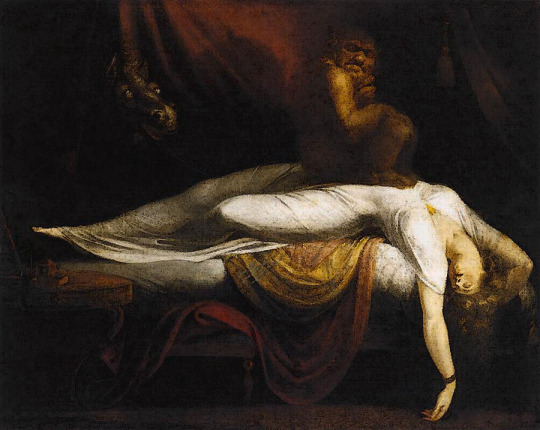
"The Nightmare" by John Henry Fuseli (1781)
My formative years during the late sixties and early seventies took place at a strange juncture in our American cultural history. At the same time that we were loudly proclaiming the supremacy of scientific thought because we'd landed men on the moon, we were also in the midst of a counter cultural explosion of interest in astrology, witchcraft, ghosts, extra sensory perception, and flying saucers. Occult-related books were flying off the shelves as sales surged by more than 100% between 1966 and 1969. Cultural historians would come to refer to this is as the "occult boom," and its aftershocks would impact popular cultural for decades to come.
My first contact with tales of the supernatural were innocuous, largely sanitized for consumption by children. I vividly remember watching Casper the Friendly Ghost and the Disney version of the Legend of Sleepy Hollow. I read to shreds numerous copies of both Where the Wild Things Are and Gus the Ghost. Likely the most important exposure for me was to the original Scooby Doo, Where Are You? cartoon which attempted to inoculate us from our fears of ghosts and aliens by convincing us that ultimately the monster was always just a bad man in a mask. (It's fascinating to me that modern incarnations of Scooby Doo seem to have completely lost this point and instead make all the monsters real.)
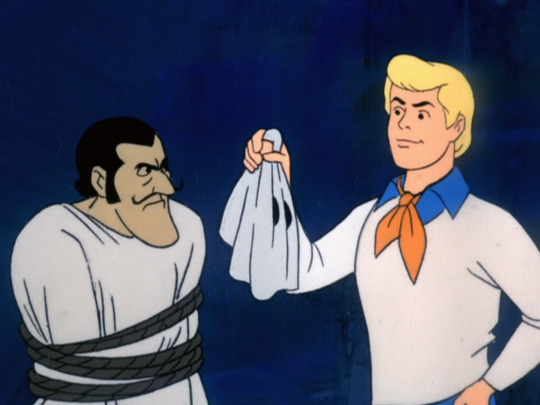
ABOVE: Although the original cartoon Scooby Doo, Where Are You? ran only for one season from 1969 to 1970, it remained in heavy reruns and syndication for decades. It is notable for having been a program that perfectly embodied the conflict between reason and superstition in popular culture, and was originally intended to provide children with critical thinking skills so they would reject the idea of monsters, ghosts, and the like. Ironically, modern takes on Scooby Doo have almost entirely subverted this idea and usually present the culprits of their mysteries as real monsters.
During that same time, television also introduced me to my first onscreen crush in the form of the beautiful and charming Samantha Stevens, a witch who struggles to not to use her powers while married to a frequently intolerant mortal advertising executive in Bewitched. The Munsters and The Addams Family gave me my first taste for "goth" living even before it would become all the rage in the dance clubs of the 1980s. Late night movies on TV would bring all the important horror classics of the past in my living room as Dracula, Frankenstein, the Wolf Man, the Invisible Man, the Phantom of the Opera, The Creature from the Black Lagoon, and Godzilla all became childhood friends. Over time the darkened castles, creaking doors, foggy graveyards, howling wolves, and ever present witches and vampires became so engrained in my psyche that today they remain the "comfort viewing" to which I retreat when I'm sick or in need of other distractions from modern life.
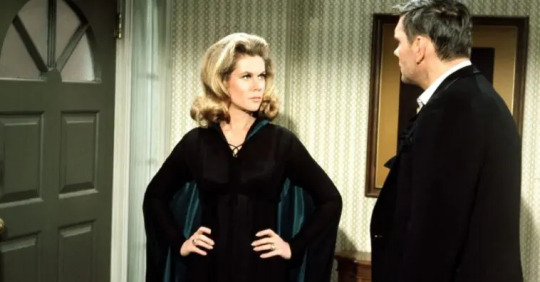
ABOVE: Elizabeth Montgomery starred in Bewitched (1964 - 1972) as Samantha Stephens, a witch who married "mortal" advertising executive Darren Stephens (played for the first five seasons by actor Dick York). Inspired by movies like I Married a Witch (1942) and Bell, Book and Candle (1958), it was a long running series that explored the complex relationship dynamics between those who possess magic and those who don't. Social commentators have referred to it as an allegory both for mixed marriages and also about the challenges faced by minorities, homosexuals, cultural deviants, or generally creative folks in a non heterogeneous community. It was also one of the first American television programs to portray witches not as worshippers of Satan, but simply as a group of people ostracized for their culture and their supernatural skills.
Even before I began elementary school, there was one piece of must-see gothic horror programming that I went out of my way to catch every day. Dark Shadows aired at 3:30 p.m. on our local ABC affiliate in Tulsa, Oklahoma which usually allowed me to catch most of it if I ran home from school (or even more if my mom or brother picked me up.) In theory it was a soap opera, but the show featured a regular parade of supernatural characters and themes. The lead was a 175 year old vampire named Barnabas Collins (played by Johnathan Frid), and the show revolved around his timeless pursuit of his lost love, Josette. It was also a program that regularly dealt with reincarnation, precognition, werewolves, time travel, witchcraft, and other occult themes. Though it regularly provoked criticism from religious groups about its content, it ran from June of 1966 until it's final cancellation in April of 1971. (I would discover it in the early 1970s as it ran in syndication.) Dark Shadows would spin off two feature-length movies based on the original, a series of tie-in novels, an excellent reboot series in 1991 (starring Ben Cross as Barnabas), and a positively embarrassingly awful movie directed by Tim Burton in 1991.
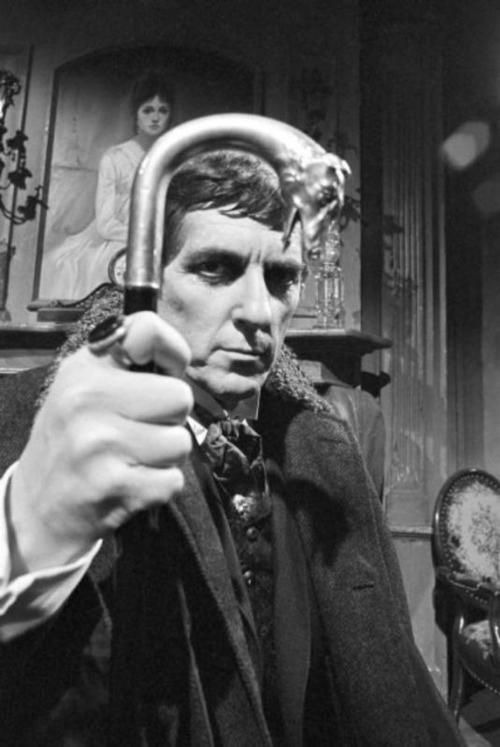
ABOVE: Johnathan Frid starred as Barnabas Collins, one of the leading characters of the original Dark Shadows television series. The influence of the series cannot be understated. In many ways Dark Shadows paved the way for the inclusion of supernatural elements in other soap operas of the 1970s and the 1980s, and was largely responsible for the explosion of romance novels featuring supernatural themes over the same time period.
While Dark Shadows was a favorite early television program for me, another show would prove not only to be a borderline obsession, but also a major influence on my career as a storyteller. Night Gallery (1969-1973) was a weekly anthology television show from Rod Serling, better known as the creator and host of the original Twilight Zone. Like Twilight Zone before it, Night Gallery was a deep and complex commentary on the human condition, but unlike its predecessor the outcomes for the characters almost always skewed towards the horrific and the truly outré. In "The Painted Mirror," an antiques dealer uses a magic painting to trap an enemy in the prehistoric past. Jack Cassidy plots to use astral projection to kill his romantic rival in "The Last Laurel" but accidentally ends up killing himself. In "Eyes" a young Stephen Spielberg directs Joan Crawford in a story about an entitled rich woman who plots to take the sight of a poor man. Week after week it delivered some of the best-written horror television of the early 1970s.
In retrospect I find it surprising that I was allowed to watch Night Gallery at all. I was very young while it was airing, and some of the content was dark and often quite shocking for its time. Nevertheless, I was so attached to the show that I'd throw a literal temper tantrum if I missed a single, solitary episode. If our family needed to go somewhere on an evening that Night Gallery was scheduled, either my parents would either have to wait until after it had aired before we left, or they'd make arrangements in advance with whomever we were visiting to make sure it was okay that I could watch Night Gallery there. I was, in a word, a fanatic.

ABOVE: Every segment of Night Gallery was introduced by series creator Rod Serling standing before a painting created explicitly for the series. Director Guillermo del Toro credits Serling's series as being the most important and influential show on his own work, even more so than the more famous Twilight Zone.
7 notes
·
View notes
Note
Hi!!! :D can I please have a ship for peaky blinders and Vikings?
I'm 18, 5'3 and I'm pretty chubby, I'm black with dark skin and I have pastel pink 4c hair right now but I like to dye my hair a lot!!! My face is round and I have hooded eyes and big lips.
I'm an infp and a Gemini and I tend to not speak until I'm spoken to, but once I start talking I don't stop easily lol. If I'm talking about something I'm especially interested in I can literally go on for hours at a time. I'm really into witchcraft, mythology, most cartoons, twilight, and languages (especially dead ones, rn I'm learning ancient Egyptian and Latin and I am ✨obsessed✨) I'm a huge history nerd but I hate hearing about war and politics because they can be kinda triggering for me, I'm incredibly sensitive but I think since I talk so much and overthink constantly I'm a lot more likely to just communicate with someone instead of arguing or fighting with them, (not that I can or would want to fight anyone I hate all physical activity so much lol)
My receiving love languages are acts of service and a bit of quality time and my giving love languages are gift giving and quality time, I'll cry while watching anything even though I hate crying in front of people, and I love literally all animals (except centipedes, they scare me a lot) and would jump in front of a Mac truck for a cat, and I will stop in the middle of a road to pick up a shiny rock.
My friends would probably just describe me as weird, but funny, and a little too intense a lot of the time.
My favorite genre of music is probably hyperpop even though I listen to literally everything (one of my favorite songs is an Icelandic lullaby about the ghost of a child calling out to its mom) and I almost always have headphones on at 100% volume.
Not sure how much of this information is relevant but I really like your work!!!!!! <3 <3 <3 thank you!!! I hope you're having a good day!!!
I SHIP YOU WITH...
SIGURD RAGNARSSON

Sigurd probably spots you from afar while you're making your way around the market of Kattegat. You, most likely, did not even know he was there. He would approach you a few days later, start up a conversation to find out more about you and the rest is history. Your interests, especially mythology, will sit quite well with Sigurd. He will definently be able to tell you a few tales you have not heard yet, among all the stories his parents told him when he was small. As for whitchcraft, that is something Sigurd might be sceptical about at first, but only until he finds himself reminded of Aslaugs gift for seeing and her predicting his "snake-eye". Just like you, he craves quality time, having been denied some attention in his childhood. He would write you his own songs and poems, beaming like a young boy when you state your approval of the lines. In addition to that, Sigurd is the least likely to start up a conversation about war or politics, much rather following his own interests. Sigurd is a gentle partner, always concerned with your well-being and a helping hand. With him, you can be sure to be appreciated for who you are.
YOUR BESTIE IS...
POLLY SHELBY
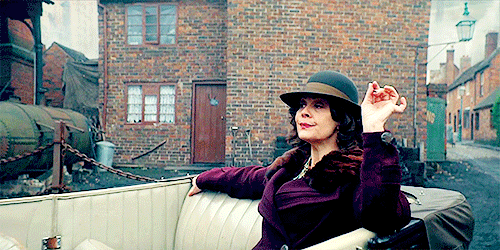
Having a positive relationship, especially a friendship, with Polly Shelby is something other people can only dream of. Polly and you connect over your senses for the supernatural. The rest of the Shelby-Clan might not be concerned with it, but the both of you know there is a higher power. You're there for her while Polly goes through a hard time and in return she makes sure to stick with you. She balances you out quite well, being tough where you're sensitive, and if there is anyone who could calm your nerves when overthinking, it would be her. Apart from that you might catch her interest with those languages you've been learning, she would find it amusing and help you practice. In conclusion: having Polly by your side is a big plus. She is an incredibly loyal friend and you can rest assured that she would send out the whole Shelby-Clan, should you ever be in need of help.
A/N: here you go! i hope you like this!
#sigurd x reader#sigurd vikings#sigurd imagine#sigurd ragnarsson#sigurd snake in the eye#sigurd#polly shelby#pollyanna#polly grey#aunt polly#peaky blinders imagine#vikings imagine#shipping requests#ship requests#ship request
11 notes
·
View notes